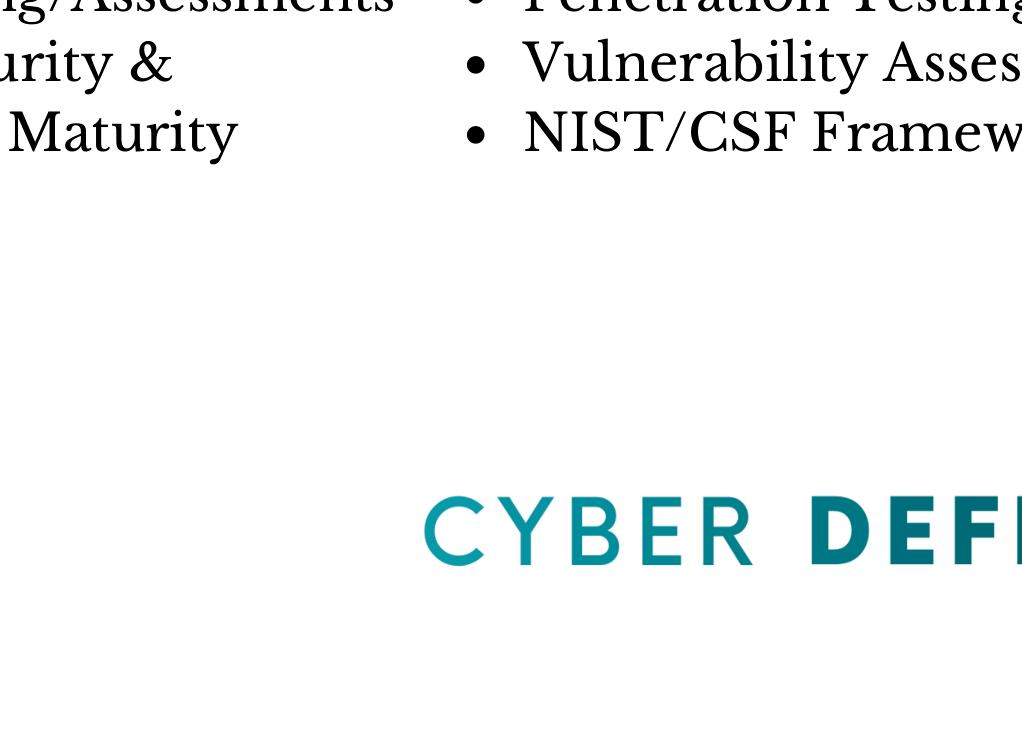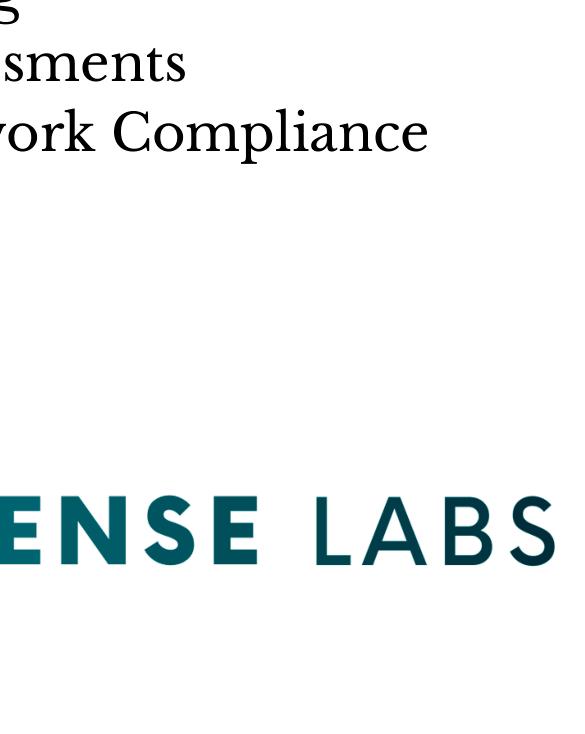




















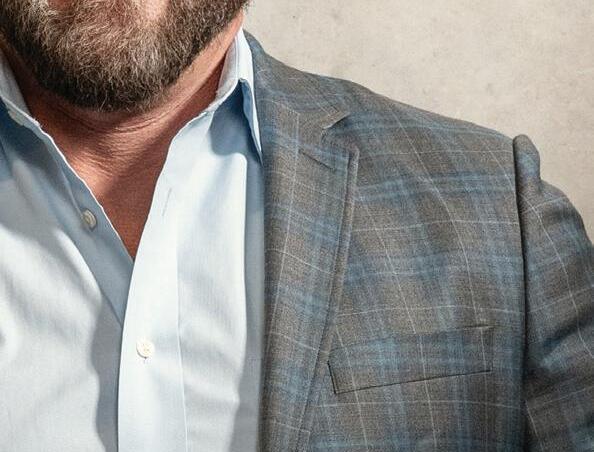













Counsel Award Honorees


Lisa
Atherton, the CEO who’s running aviation giant Bell





























































Counsel Award Honorees


Lisa
Atherton, the CEO who’s running aviation giant Bell



























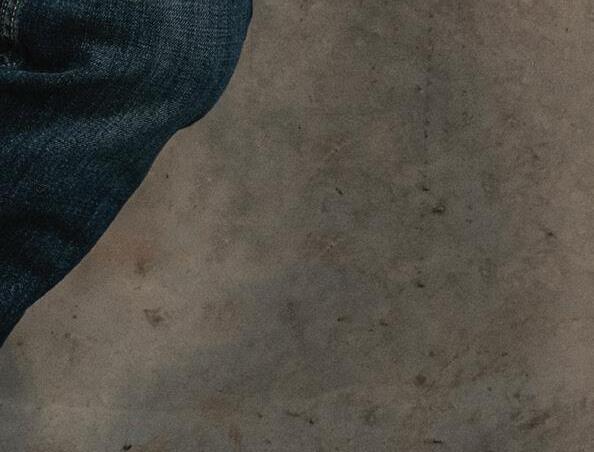
Linear Labs’ BRAD HUNSTABLE has experienced spectacular success and suffered unimaginable pain. Here’s what his journey has taught him.












Whitley Penn’s Forensic, Litigation, and Valuation specialists are equipped with extensive experience and hold the necessary credentials to guide you through a diverse range of litigation scenarios. Whether navigating the intricacies of family law, intellectual property, fraud & forensics, or commercial litigation, our commitment is to help guide you towards your desired outcome.



Start today by scanning the QR code or visit whitleypenn.com.









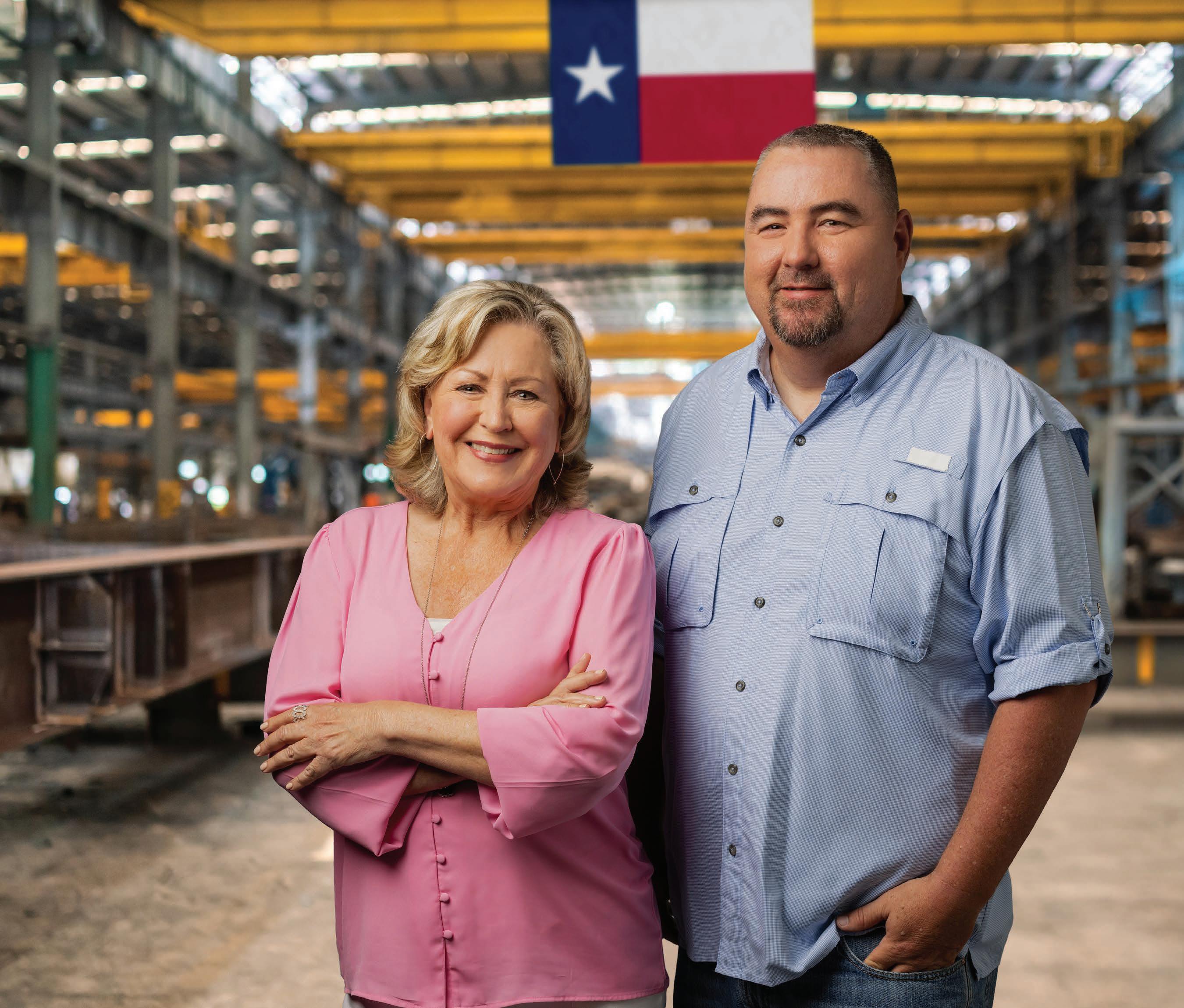


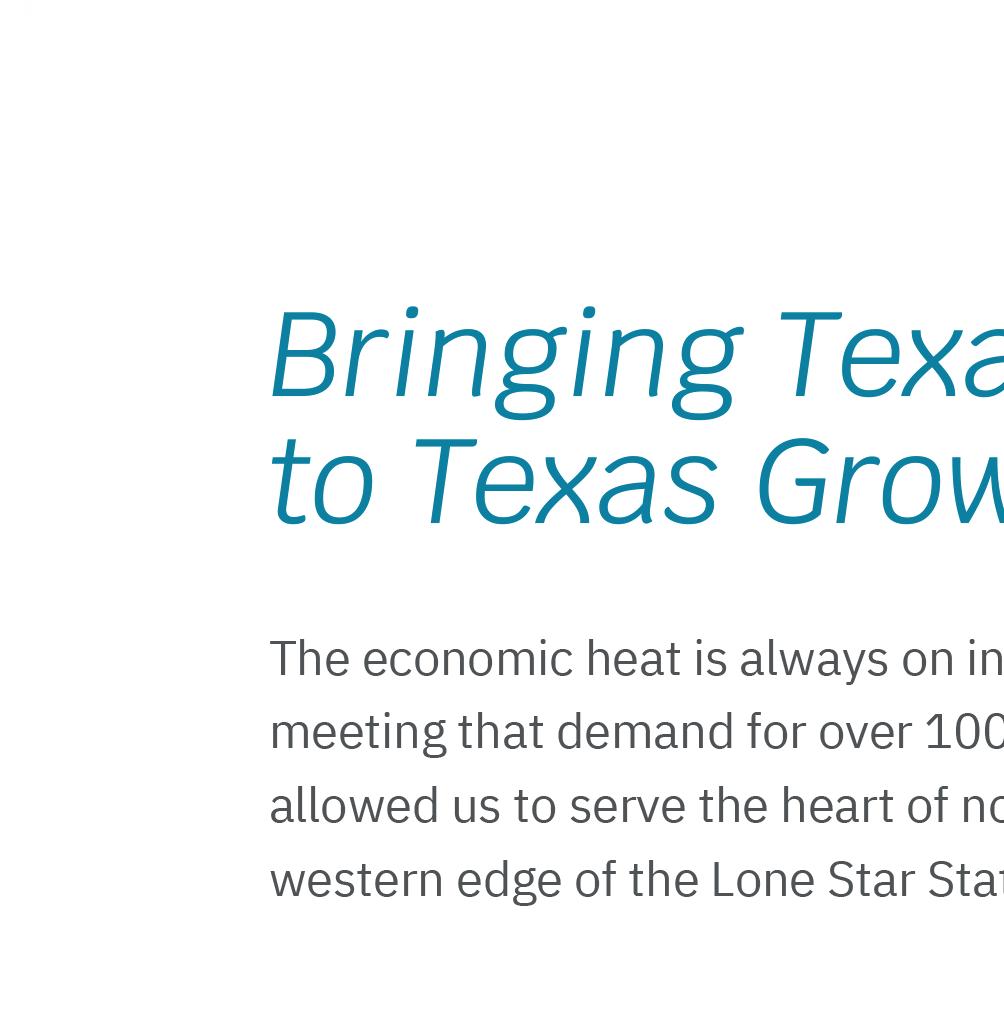

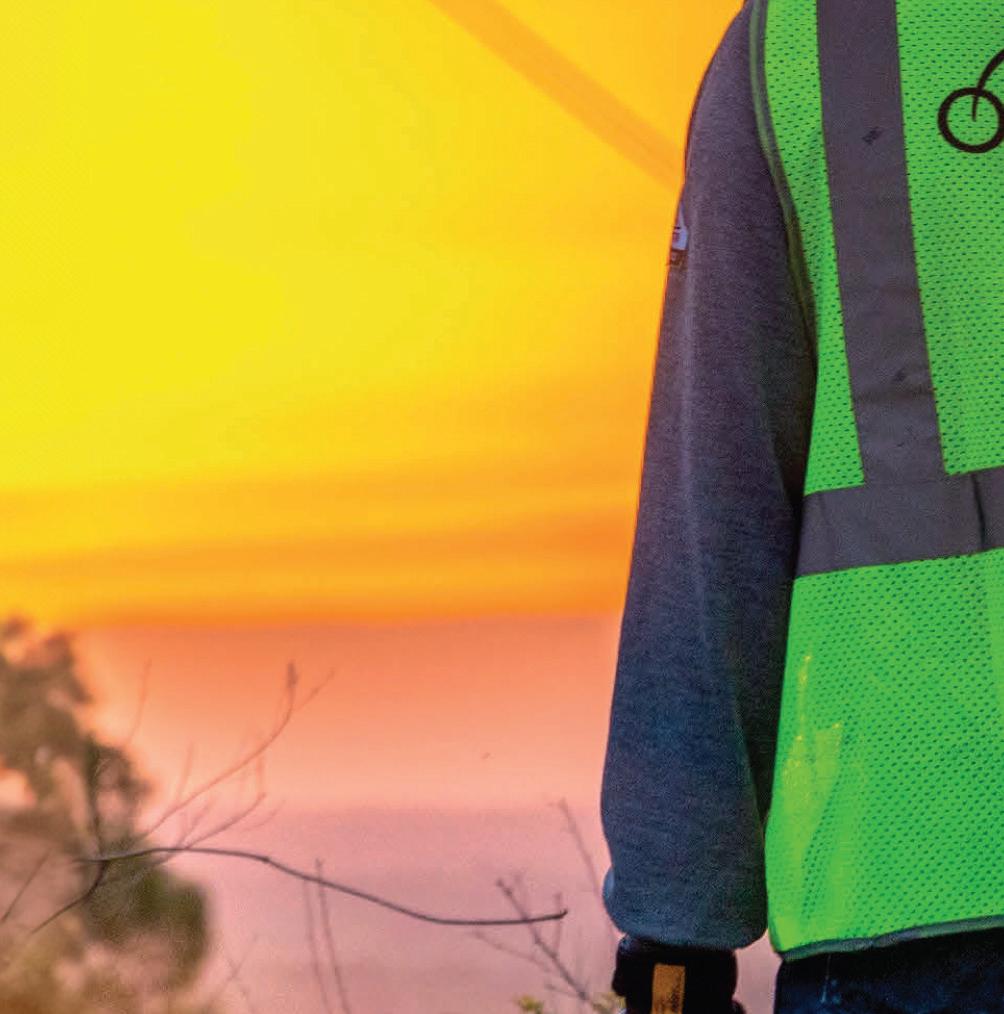












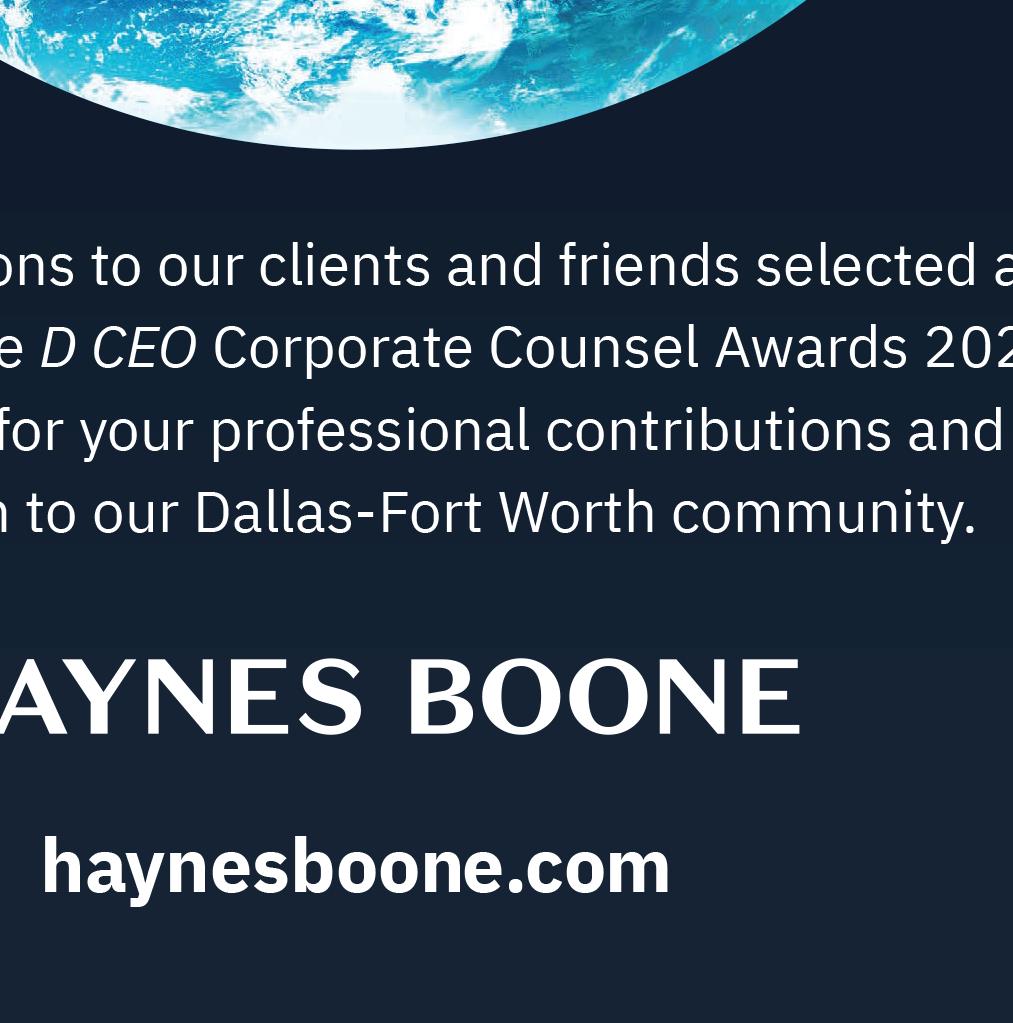




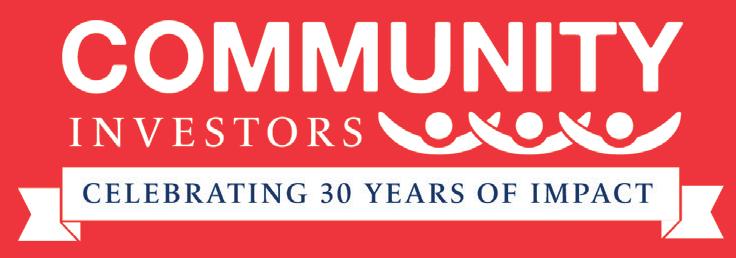
The Real Estate Council (TREC) and TREC Community Investors would like to extend a special thank you to our FightNight XXXV sponsors. With this generous support, we have been able to invest in Dallas communities for over 30 years, energizing neighborhoods and revitalizing some of our city’s most underserved communities.
THANK YOU TO ALL OUR SPONSORS FOR STANDING STRONG AND MAKING FIGHTNIGHT ONE OF NORTH TEXAS’ LARGEST PHILANTHROPIC EVENTS EVERY YEAR. WORLD CHAMPION SUPER HEAVY WEIGHT Hillwood, a Perot Company CHAMPIONSHIP FIGHT
Together with our members and our community partners, we make an unwavering commitment to build a lasting impact and change lives in the neighborhoods we serve.
Thank you for supporting FightNight XXXV and helping us Build the City You’ve Imagined.







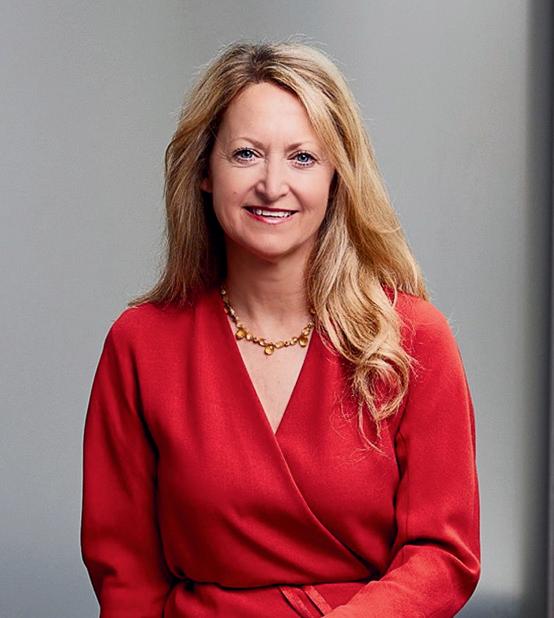


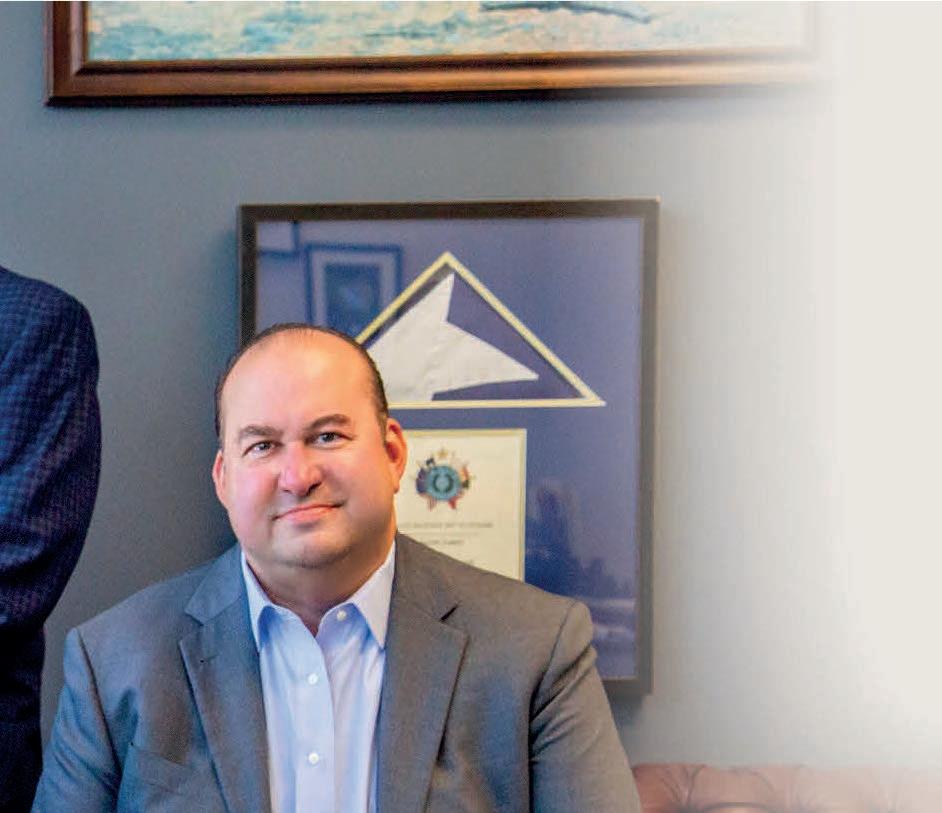


























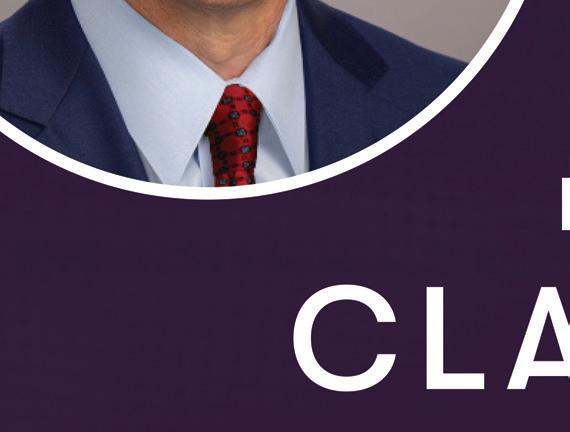














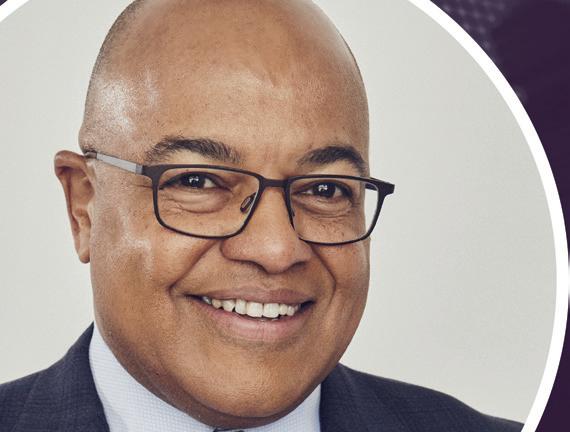



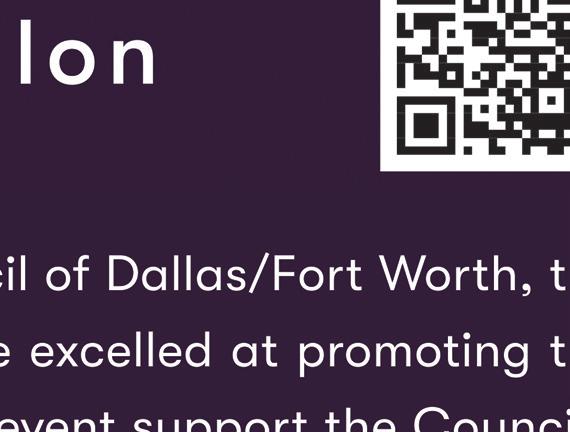









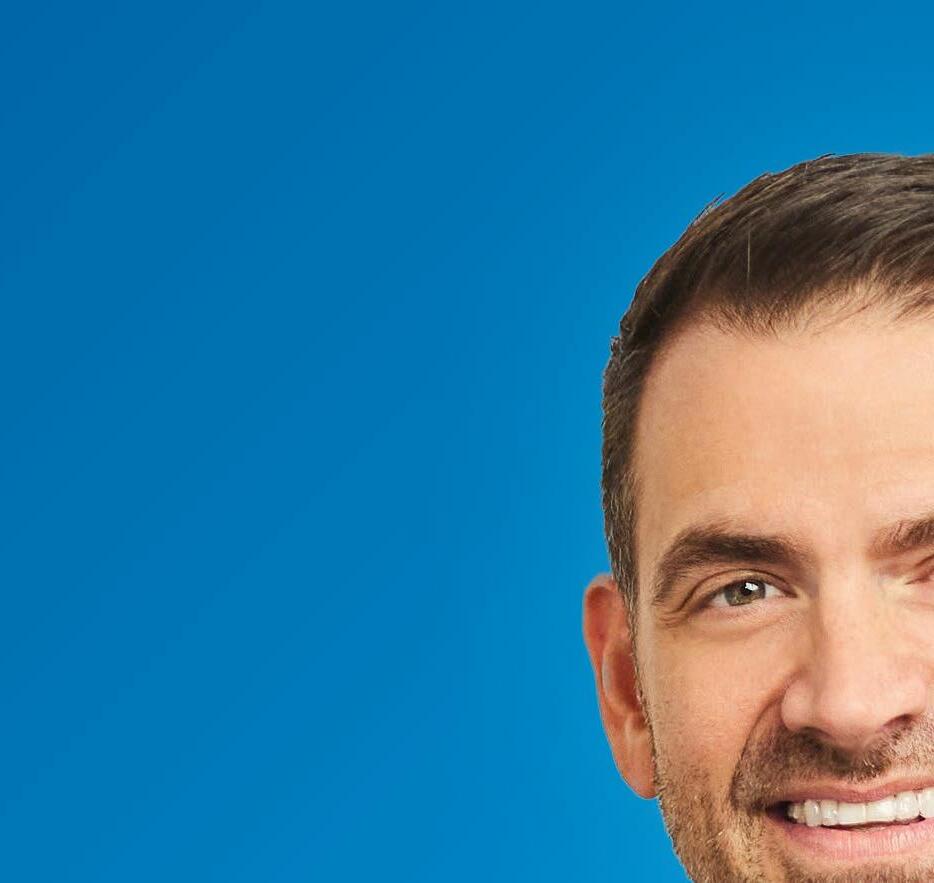

“Strong relationships, shared ownership, and cross-functional communication are crucial to a successful company. When we all share accountability for outcomes, the company, and our teams, can thrive.”
– Daniel Carter









RailPros is delighted to have our Chief Legal & People Officer, Daniel Carter, among the finalists for this year’s Corporate Counsel Awards. Daniel’s leadership of our Legal, Safety, People Operations and Comms teams enables us to work safely and efficiently in support of our internal divisions and our clients.
Congratulations to Daniel and the other nalists for this year’s awards!

RailPros is headquartered in Irving, with offices across North America. Want to join our team? We’re hiring – RailPros.com/career
Follow us on LinkedIn


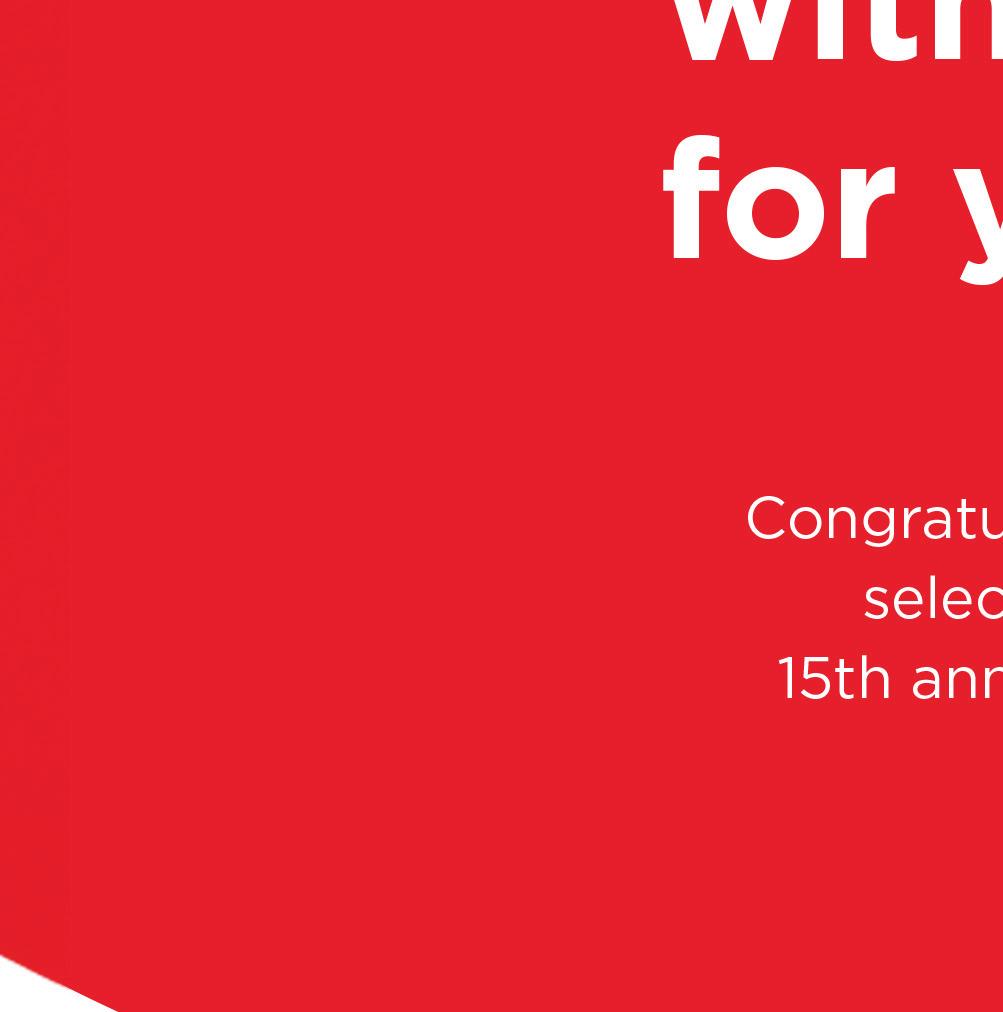











Children’s HealthSM congratulates the region’s top in-house attorneys named as finalists in D CEO Magazine’s Corporate Counsel Awards, including our Chief Legal Officer. Thank you, Amy Yeager, for your dedication to making life better for children.
Learn more about our incredible team at childrens.com

THURSDAY, OCTOBER 17, 2024
6:00PM - 8:30PM
TOWER CLUB DALLAS 1601 ELM, 48TH FLOOR DALLAS, TX 75201
TICKETS ON SALE NOW
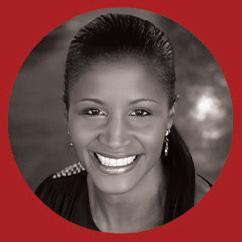



CEO, Noelle Leveaux, LLC
EVP & COO, Harmony Bank
LEKIYA MANZO Sr. Director, T-Mobile
KERRI FULKS
COO, HC2Q


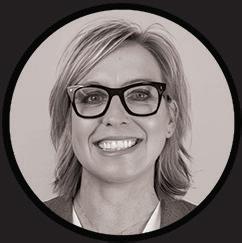

AMBER BENTON VP of HR, Frito-Lay
AMBER COX COO, Dallas Wings


From intimate social gatherings to large-scale corporate celebrations, Vestals Catering is your trusted catering partner this holiday season.

Since 2017, Communities Foundation of Texas (CFT) has worked with companies of all sizes to grow their impact in North Texas. The Center for Business Impact (formerly CFT for Business) is a one-stop shop for businesses looking to make the greatest positive impact on our region.
Services include:
• Charitable fund management, philanthropic advising, and grantmaking
• Corporate giving campaigns
• Employee volunteer and networking opportunities
• Philanthropic board training, internship facilitation, and more
Reach out to our team if we can provide a complimentary consultation to share how our expertise in corporate social responsibility; diversity, equity, and inclusion initiatives; and environmental, social, and governance programs can help drive your employee and community engagement.
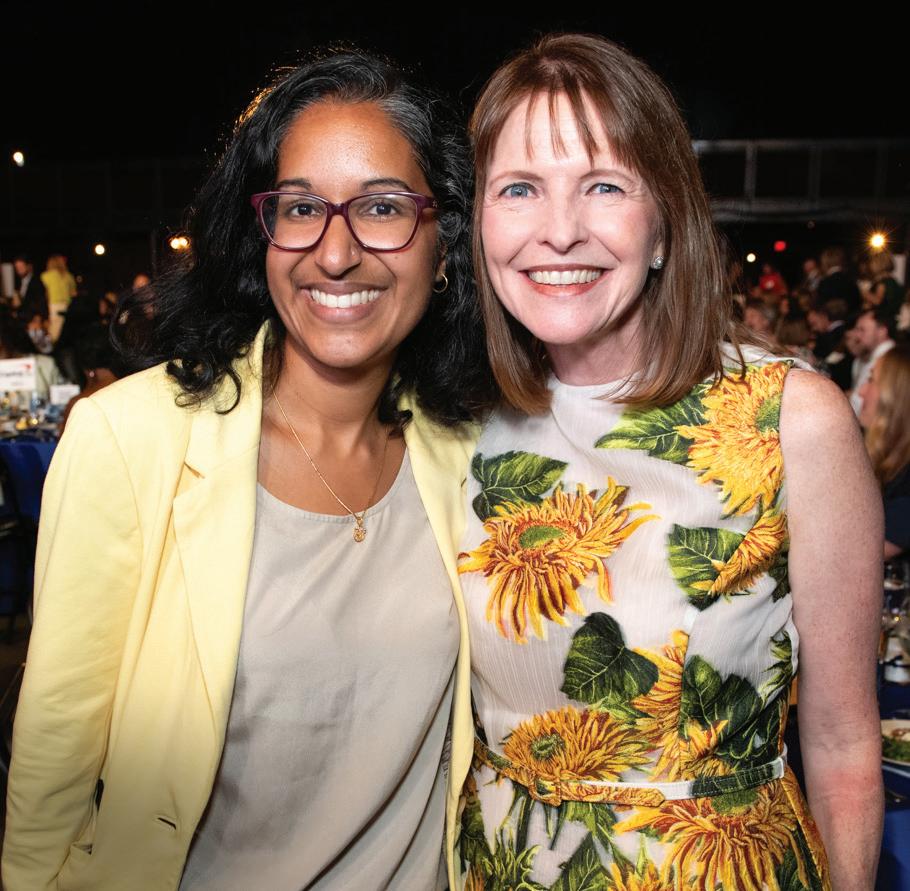



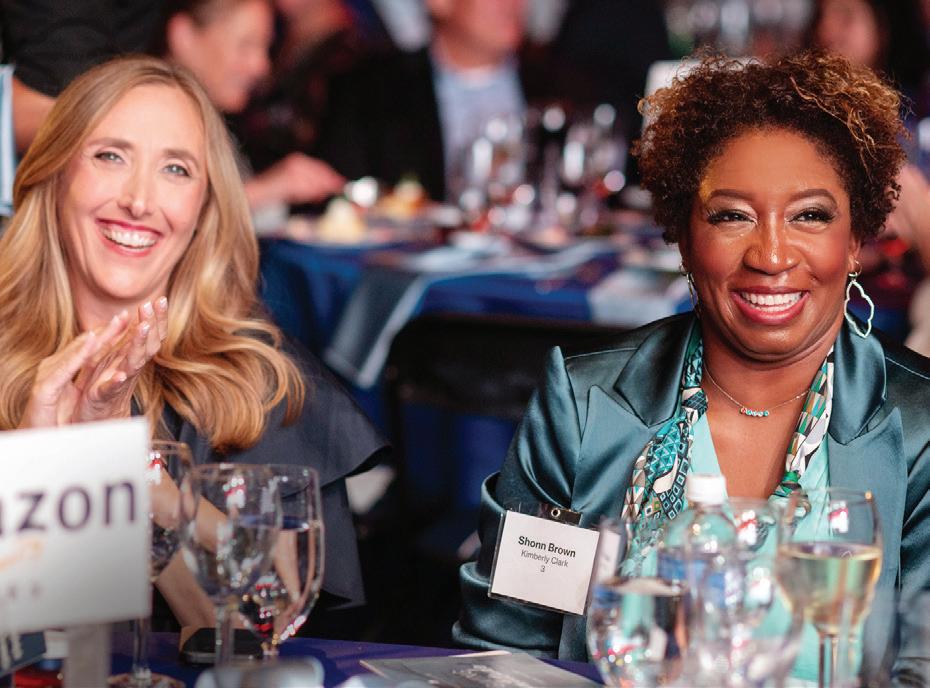
more than 500 guest s recently gathered at The Factory in Deep Ellum to celebrate D CEO’s seventh annual Nonprofit and Corporate Citizenship Awards, presented in partnership with Communities Foundation of Texas. The event brought together nonprofit leaders, organizations, and corporate citizens who are working to make Dallas even better. Of the more than 720 nominations, 135 were named as finalists. Thank you to title sponsors Amazon, Capital One, Communities Foundation of Texas, and Texas Mutual Insurance for their help in making this meaningful program possible.





Congratulations
SADAF ABDULLAH, Ericsson
JENNY ALLENBAUGH, PespiCo/Frito-Lay
FARAH BHAYANI, G6 Hospitality
A. SHONN BROWN, Kimberly-Clark
MITZI BROWN, BRIX Holdings
STEPHANIE BRYANT, Orthofix
ALTRESHA Q. BURCHETT-WILLIAMS, AT&T Services
DANIEL CARTER, RailPros
VERONICA R. CARTWRIGHT, Oncor Electric Delivery
REBECCA CHARTAN, MV Transportation
KAYLA COLEMAN, Buckner International
OLESJA L. CORMNEY, Toyota Motor North America
JASON CUPO, JPI Cos.
LACY L. DURHAM, Constellation Energy Generation
CASEY FRASER, Employer Direct Healthcare
VON HAYS, Comerica Bank
NICOLA HOBEICHE, TaxAct
HEATHER D. JOHNSON, Energy Transfer
SHARON JOHNSON, MODE Global
LILLIAN KIRSTEIN, 7-Eleven
FIBBENS ADDO KORANTENG, Southwest Transplant Alliance
CAROLYN LAM, Ecobat
JOSEPH MCCOIN, Coca-Cola Southwest Beverages/Arca Continental
SAMANTHA MORI, Texas Capital
LATOYIA PIERCE FRINK, FirstService Residential
JESSICA PRESNALL, Big 12 Conference
HEATHER RANDALL, Trintech
KATHERINE REILLY, Vistra Corp.
BRIA RILEY, Keurig Dr Pepper
CHANDLER ROGNES, Goosehead Insurance
AMY RANEY YEAGER, Children’s Health
DELPHINA YUEN, Outschool










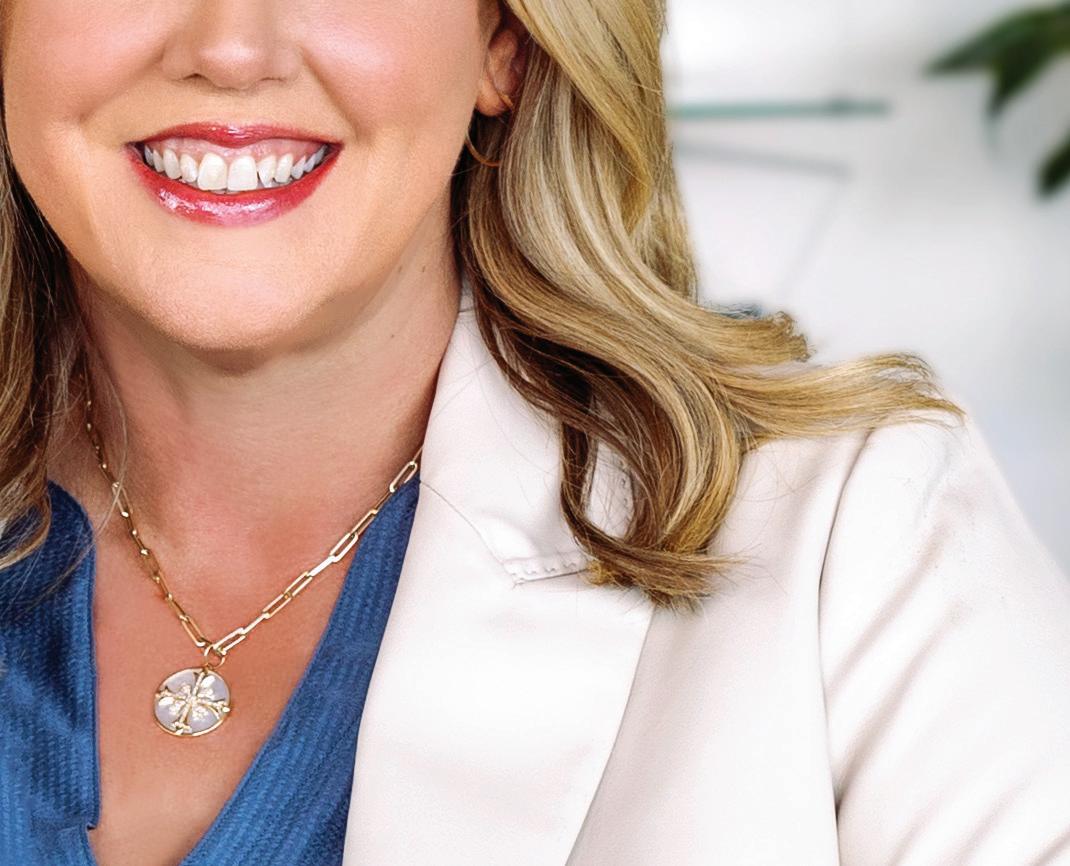















27 YOU NEED TO KNOW George Popstefanov, PMG Advertising Agency
30 MEET THE 500 Carolyn Rosson, Ebby Halliday Cos.
30 FRESH IDEAS
Addie Gundry and Brittany Hizer, Pluie
32 FOOD + BEVERAGE Justin Howe, HTeaO
34 CONVERSATION WITH Ray Hu nes, Hu nes Auto Dealerships
53 LEADING OFF Marissa Solis, National Football League


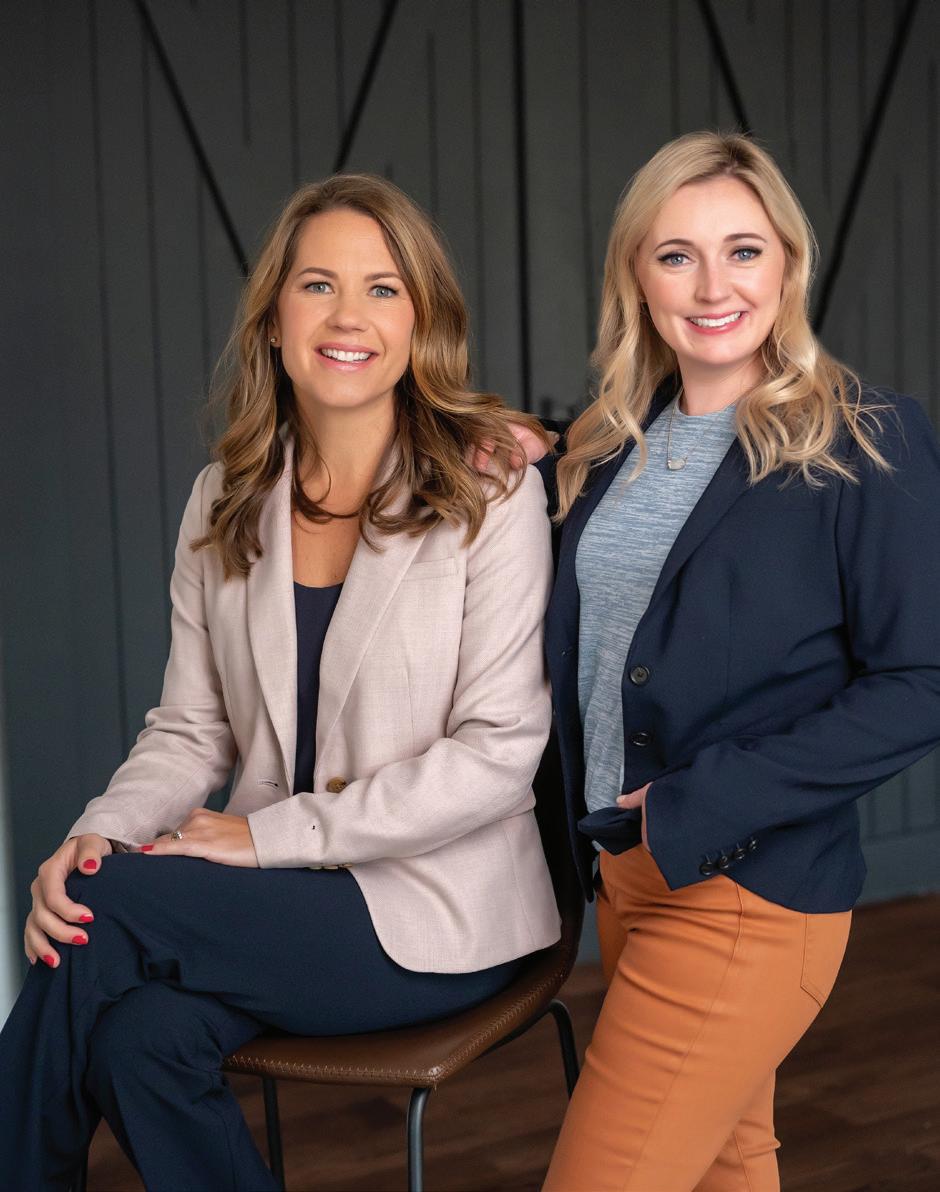
54 HEALTHCARE
Executives are increasingly focused on brain science to maximize e ectiveness, and investors have taken note.
56 ON TOPIC
Meyling Ortiz of Toyota Motor North America, David Stark of OpTic Gaming, and Irma Gonzalez of Lerma Agency share their key leadership strategies.

59 ART OF STYLE Garrison Efird, Newmark
60 SNAPSHOT Sam Romano, Romano Enterprises
62 WELL TRAVELED: ASPEN, BRECKENRIDGE, STEAMBOAT, VAIL
Marijke Lantz Flowers, Billingsley Co.
66 ROOTS
Viktor Szucs, UBS
76 END MARK Clint Murchison Jr., Dallas Cowboys



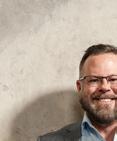









































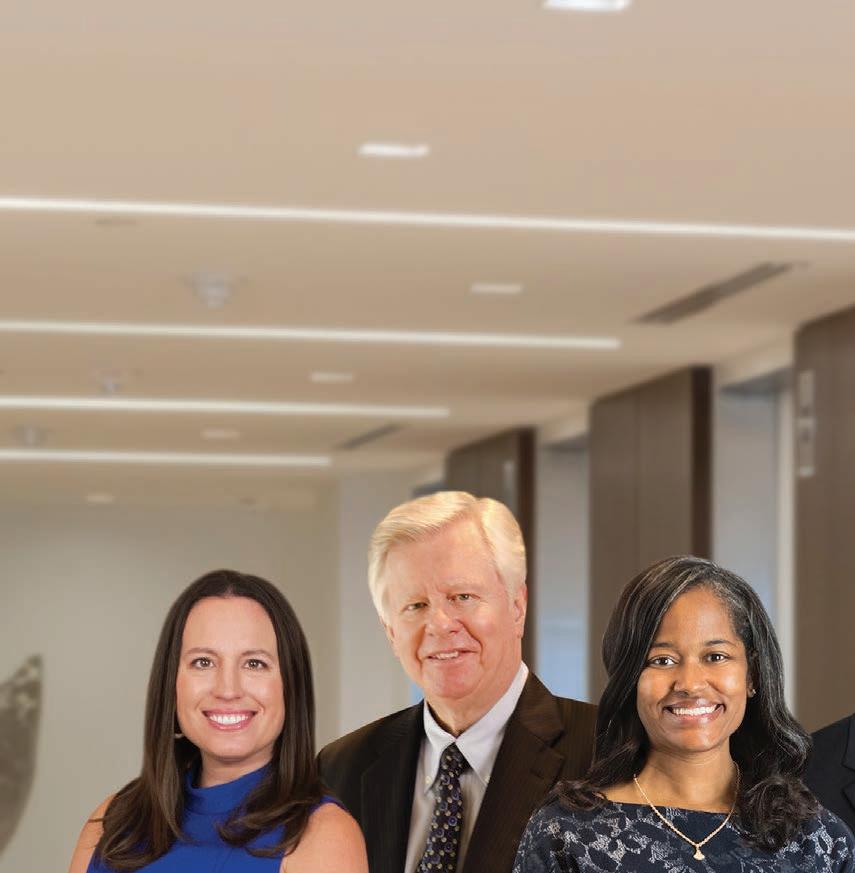
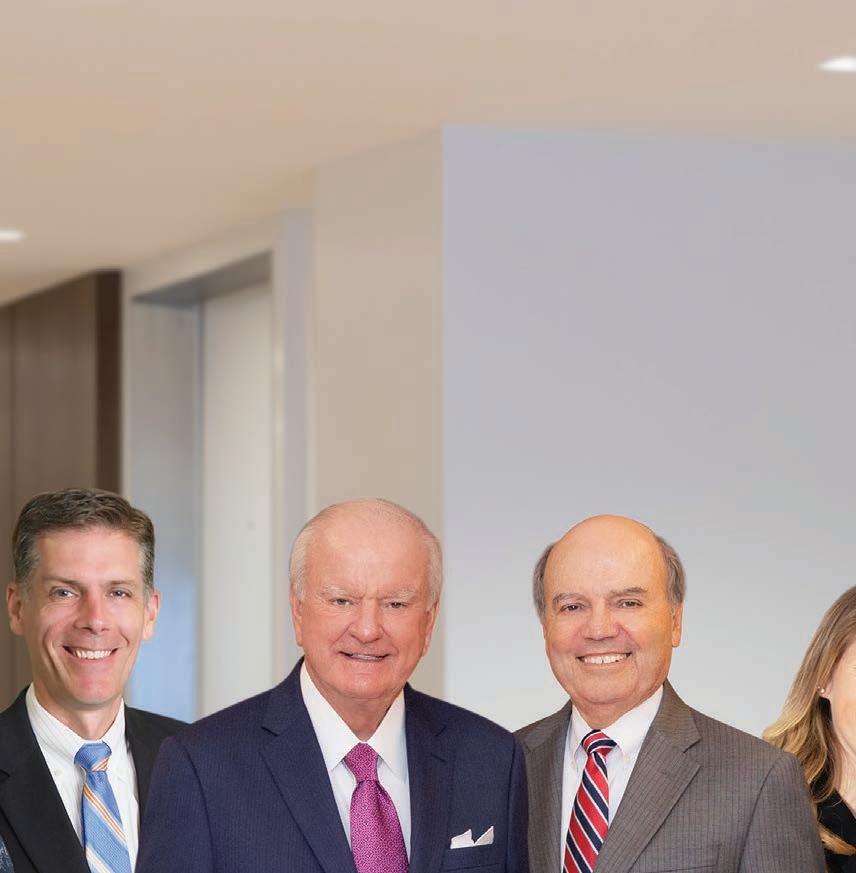





Gardner Wallace specializes in life cycle financial planning and delivering worksite financial education. We are CFE Certified Financial Educators® trained to deliver financial literacy. Contact us for more information on this highly appreciated benefit.


with more than 1,000 patents in his name, thomas edison is widely regarded as the most prolific inventor in American history. His high-impact innovations range from electric power generation and early iterations of the lightbulb to the phonograph, motion picture camera, and enhancements to the telephone. However, it wasn’t his creative genius that he credited for his success; Edison is also known for saying, “There is no substitute for hard work.”
I’ve thought about this axiom over the years when I’ve needed an extra push to get through a challenge. More than inspiration to buckle down, it was a reminder that things were in my control. I didn’t need to depend on others or outside forces to make something happen; I could keep pushing forward and do it on my own.
Having spent more than three decades writing about entrepreneurs and C-Suite execs, I’ve seen Edison’s belief proven true again and again. There are two great examples in this issue of D CEO. In Managing Editor Ben Swanger’s profi le of Bell’s Lisa Atherton, he shares how she worked two jobs, doing business development for Textron while also staying up until the wee hours doing the books for an ice cream shop she and her husband owned. “If you ever need good marriage counseling, go into business with your spouse,” she advises. “You really learn to communicate well, problem-solve, and figure out how to do things from di erent perspectives together.”
Brad Hunstable, the subject of a fi rst feature from Assistant Editor Layten Praytor, also knows what it’s like to work hard and make sacrifices. He did so while at West Point, again when he took night classes to earn an MBA while also serving in the U.S. Army and raising a newborn daughter, and when he spent six months away from his family trying to secure VC money in Silicon Valley for his tech startup. “You must make an investment in certain things for a payo later,” Huntstable says. “In my experience, the most successful people are the ones who can delay satisfaction for something in the future.”
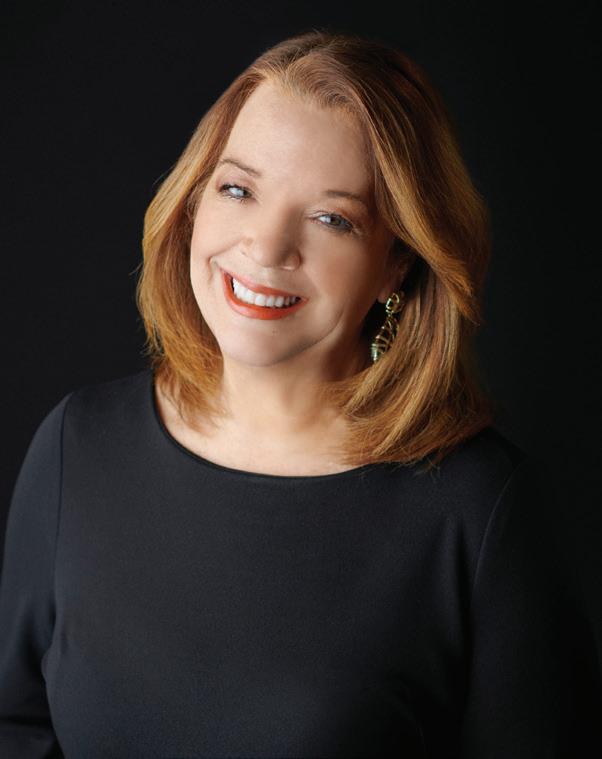

Christine Perez Editor
PlainsCapital

•
•
•
•



EDITORIAL
EDITOR Christine Perez
MANAGING EDITOR Ben Swanger
SENIOR EDITOR Will Maddox
ASSOCIATE EDITOR Audrey Henvey
ASSISTANT EDITOR Layten Praytor
CONTRIBUTING WRITERS Richard Alm, W. Michael Cox
ART
DESIGN DIRECTOR Hamilton Hedrick
STAFF PHOTOGRAPHER Elizabeth Lavin
ADVERTISING
SALES MANAGER Rachel Gill
ADVERTISING DIRECTOR Rhett Taylor
SENIOR ACCOUNT EXECUTIVES Cami Burke, Haley Muse
MANAGING EDITOR OF SPECIAL SECTIONS Jennifer Sander Hayes
DIGITAL SALES COORDINATOR Olivia Booth
CLIENT OPERATIONS COORDINATOR Julianne Emeterio
MARKETING & EVENTS
MARKETING DIRECTOR Madeline Alford
MARKETING MANAGER Tori Carruth
ADVERTISING ART DIRECTOR Katie Garza
ASSOCIATE ADVERTISING ART DIRECTOR Andrea Chavez
EVENTS PRODUCER Kevin Morgan
EVENTS COORDINATOR Breanna Furrow
SPECIAL PROJECTS ASSISTANT Jordan Radasch
AUDIENCE DEVELOPMENT AND BRAND
AUDIENCE DEVELOPMENT COORDINATOR Emma Barretto
EDITORIAL PROGRAMS MANAGER Sarah Masquelier Risi
SPECIAL PROGRAMS COORDINATOR Betty Burns
SENIOR GRAPHIC DESIGNER Anita Moti
RETAIL STRATEGY MANAGER Steve Crabb
MERCHANDISER David Truesdell
OPERATIONS ASSISTANT Macey Pieterse
DIGITAL
DIGITAL DIRECTOR Ricky Ferrer
DIGITAL OPERATIONS COORDINATOR Jade Garrett
SOCIAL MEDIA MANAGER Melissa Tallo
PRODUCTION
DIRECTOR Chris Mulder
PRODUCTION MANAGER Grace John
PHOTO RETOUCHER Jasmine Green
PRODUCTION INTERN Aubrey Matson
BUSINESS
CONTROLLER Sabrina LaTorre
SENIOR ACCOUNTANT Debbie Travis
SENIOR STAFF ACCOUNTANT Randall Rasor
ACCOUNTS RECEIVABLE COORDINATOR Jessica Hernandez
AP SPECIALIST Ron Dewey
EMPLOYEE ENGAGEMENT DIRECTOR Patricia Martin
IT TECHNICIAN Luan Aliji
OFFICE MANAGER Will Smith
ADMINISTRATIVE COORDINATOR Nikhael Virden
HOW TO REACH US
MAIL 750 N. Saint Paul St., Ste. 2100, Dallas, TX 75201
MAIN OFFICE 214-939-3636
WEBSITE www.dmagazine.com/dceo
The magazine assumes no responsibility for the return of unsolicited manuscripts.
LETTERS TO THE EDITOR feedback@dmagazine.com
CURRENT SUBSCRIPTION 800-732-9673 or subscriberservices@dmagazine.com
NEW SUBSCRIPTION www.dmagazine.com/requestdceo
ADVERTISING 214-939-3636 x 128
REPRINTS 214-939-3636 CUSTOM PUBLISHING 214-850-4464
SUBSCRIPTIONS
11 issues for $54 in the United States, possessions, APO and FPO; $70 per 11 issues elsewhere. Please provide old and new addresses and enclose latest mailing label when inquiring about your subscription.
D
EDITOR-IN-CHIEF AND CEO Christine Allison
PRESIDENT Gillea Allison
CHIEF FINANCIAL OFFICER Thomas L. Earnshaw
FOUNDER Wick Allison PEFC/29-31-337
CERTIFIED AS A WOMEN-OWNED SMALL BUSINESS BY WOMEN'S BUSINESS COUNCIL SOUTHWEST
ROGGE DUNN, CEO, ROGGE DUNN GROUP
you can win an argument or persuade a customer, employer, or family member by framing the issues in a way to achieve the answer or agreement you seek. If you want to persuade someone to participate in bungee jumping, consider these two different frames: “Would you like to participate in an exhilarating, once-in-a-lifetime experience with your children that your family will never forget?” Or, “Would you like to jump off a 500-foot-high platform, headfirst, held only by a bungee cord wrapped around your ankles by a teenager making minimum wage who is a seasonal employee on South Padre Island?” Same activity, but your audience’s perception of it is radically different--driven by how that activity is framed.
In one of the most high-stakes litigation and reputational battles, the cigarette industry recognized the power of framing the cigarette lawsuits by using the personal responsibility theme. The cigarette industry touted individual consumer’s freedom of choice. They used this concept to deflect blame from the cigarette companies onto consumers. Their secondary message was that holding cigarette companies liable would reduce an adult’s liberty and freedom of choice. They encapsulated the concept in the phrase, “My life, my choice.” These arguments were even more powerful after the Cigarette Labeling and Advertising Act required cigarettes to contain warnings. These arguments were so persuasive that plaintiffs’ lawyers had to counter them by arguing that smokers did not have the ability to make a choice because of the addictive nature of cigarettes.
All good trial lawyers and salespeople know that you must frame the issues and tailor the same to your argument. A great article on this concept is: Entmen, “Framing: Toward Clarification of a Fractured Paradigm,” Journal of Communications, December 1993.
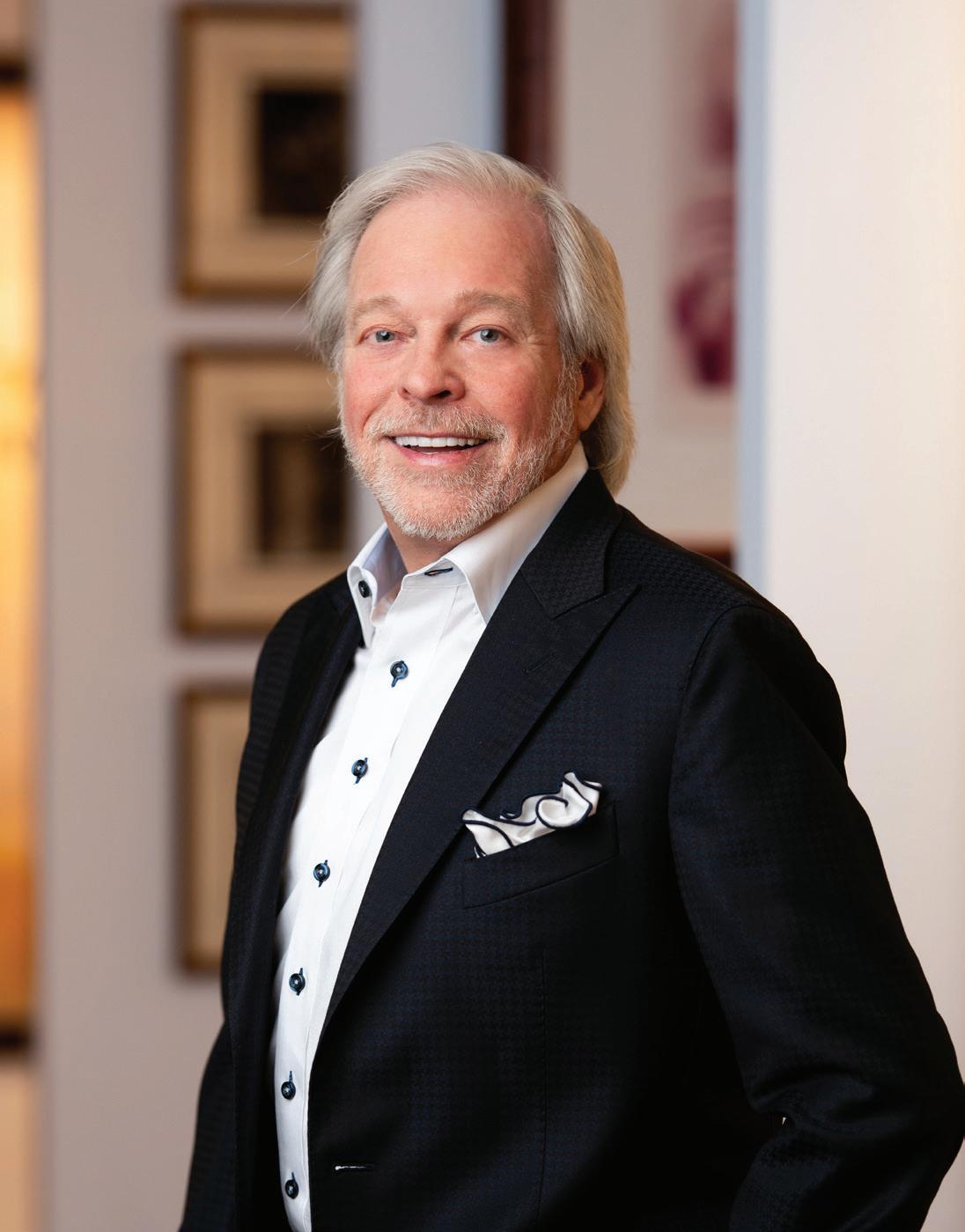
For example, McDonald’s argued that the woman who won a jury verdict of more than $860,000 when coffee scalded her pelvis should have taken personal responsibility for putting the hot coffee between her legs. McDonald’s portrayed that as an example of a runaway jury verdict. The facts are that a 79-yearold grandmother injured by super-hot coffee was hospitalized for eight days, suffered third-degree burns, and required two years of medical treatment. McDonald’s required its restaurants to serve coffee at 190 degrees, which was 40 degrees hotter than most other restaurants. A 190-degree cup of coffee can cause third-degree burns in three seconds. Further, McDonald’s had received more than 700 complaints from customers, including children, who suffered burns because of its coffee. Nevertheless, McDonald’s portrayed this grandmother as failing to take personal responsibility for spilling coffee on herself--instead of McDonald’s taking corporate responsibility for failing to do anything after knowing that its coffee injured more than 700 customers. McDonald’s framing was successful. Many people’s response to McDonald’s PR spin was, “I’ll gladly take $800,000 and you can pour hot coffee on my crotch.”
The takeaway: When you are attacked for making a mistake, or you are trying to get someone else to admit fault, the taking personal responsibility argument is an effective tool in your persuasion toolkit.
ROGGE DUNN represents companies, executives, financial advisors, and entrepreneurs in business and employment matters. Clients include the CEOs of American Airlines, Baker Hughes, Beck Group, Blucora, Crow Holdings, Dave & Busters, Gold’s Gym, FedEx, HKS, Texas Motor Speedway, Texas Capital Bancshares, and Texas Tech University, and sports figures like New York Mets manager Buck Showalter, NBA executive Donnie Nelson, and NBA Hall of Fame coach Larry Brown. Dunn’s corporate clients include Adecco, Beal Bank, Benihana, Cawley Partners, Match.com, Rent-A-Center, and Outback Steakhouse. In 2021, 2022, 2023 and 2024 Dunn was included in D CEO Magazine’s Dallas 500 list, which recognizes the most influential business leaders in North Texas. He has been named a Texas Super Lawyer every year that award has been given and recognized as one of the top 100 attorneys in Texas by Texas Monthly (a Thomson Reuters service) and a D Magazine Best Lawyer 15 times.



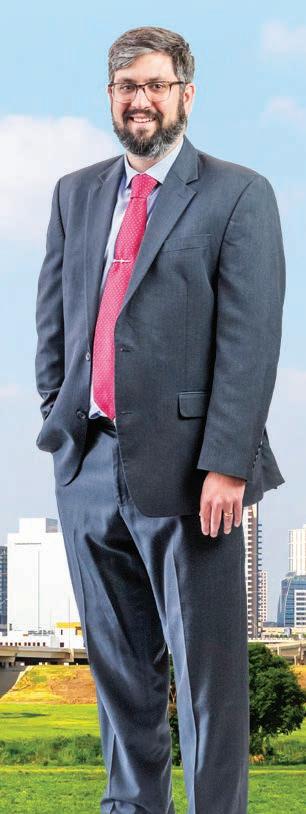
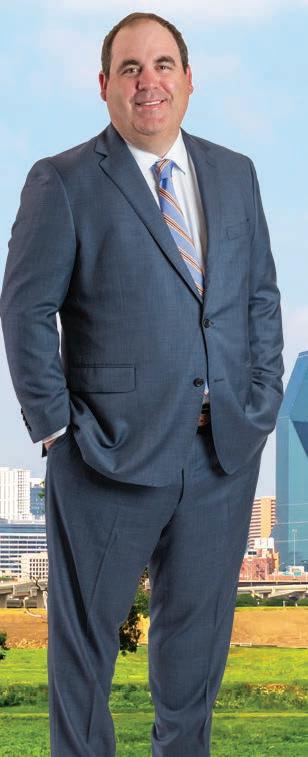

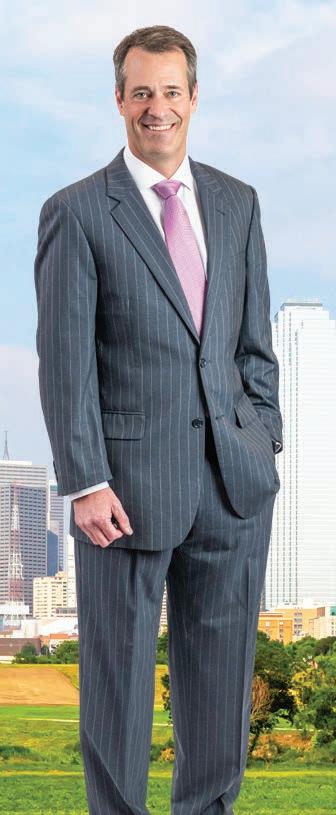

















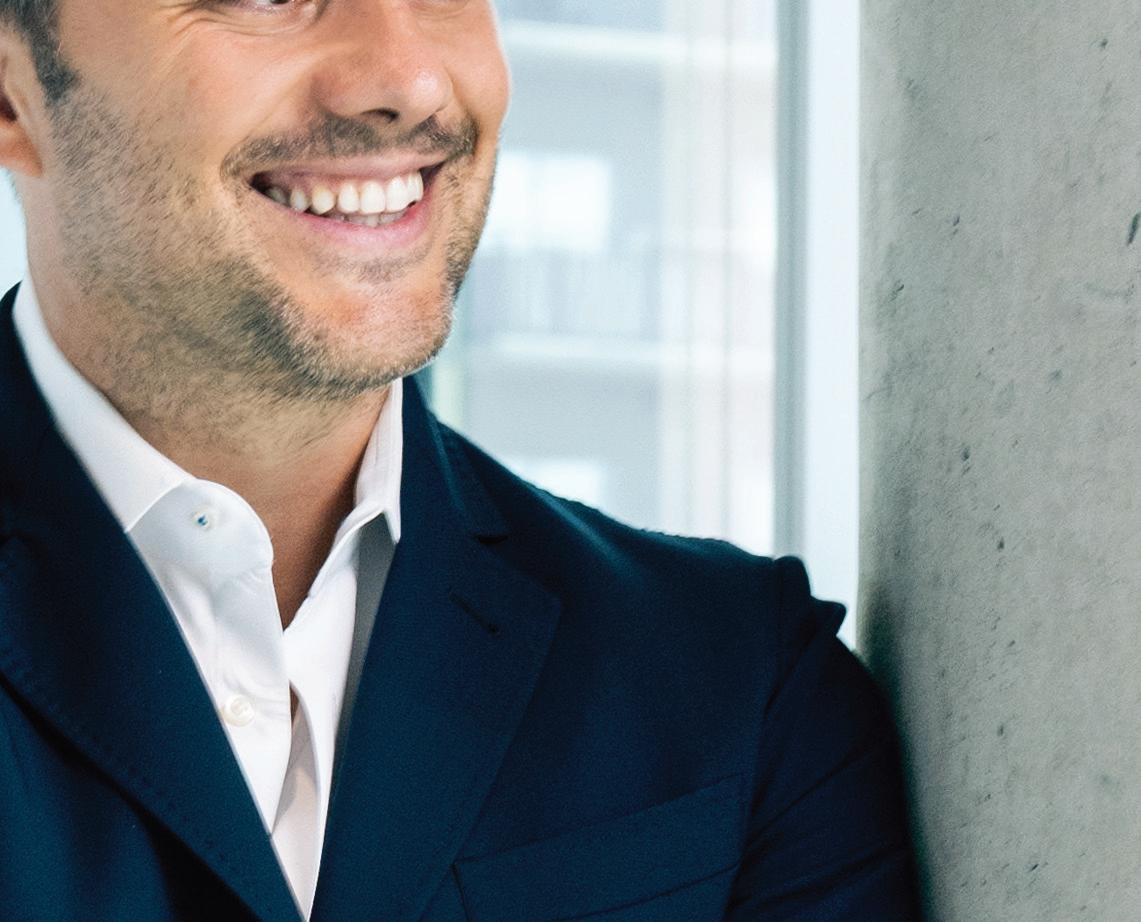
















Ggrowing up in macedonia in southeast Europe, George Popstefanov attended a vocational high school that put him on an eight-year track to become a dentist. His real passion, however, was somewhere at the intersection of entrepreneurialism and technology. When he was young, his father bought him his first computer, a Commodore 64, but the owner’s manual was in German. So, Popstefanov took it upon himself to learn the language and later taught himself how to program in BASIC.
In 2000, when he was 17, his parents sent him off from the war-torn region to finish high school in America. With visions of Miami Vice and 90210 dancing in his head, he landed in Dickeyville, Wisconsin, a town with fewer than 1,000 residents. “The perception of America was palm trees and fast cars,” he says with a laugh, “but life in Dickeyville was quite different than that.”
After graduating, he followed a friend to the University of Central Oklahoma before transferring to Texas Christian University. He earned a business degree and joined Range Online Media, a Fort Worth digital marketing firm that counted Google and Calvin Klein as clients. After the company was acquired by search engine marketing company iProspect, Popstefanov no longer felt he fit. So, in 2010, he gave up his $35,000 salary and, at age 27, went out on his own. With just $960, he launched PMG Advertising Agency and quickly won business from RadioShack, J Crew, and Travelocity.
From the start, the agency was cash-flowing and profitable. In its first full year, 2011, PMG reported about $1 million in revenue. In year two, the company surpassed $2.6 million, then $5.6 million in year three, and after its fourth year, PMG broke the $10 million mark.
“Our mission and vision are built around one philosophy: We’re not trying to grow the fastest or be the largest,” Popstefanov says, “we want to be the most respected.”
The formula has worked. Today, PMG has 60 clients—including Apple, Nike, Whole Foods, and Sephora—and has reported double digit year-over-year revenue growth since eclipsing eight figures nearly a decade ago. The company is on pace to do nearly $7 billion in media billings for its clients this year.
PMG also has plenty of local clients, such as JSX, Omni Hospitality, and Nothing Bundt Cakes. Its latest projects include advertising campaigns for various companies centered around the 2024 Olympic Games in Paris, including hits for Beats by Dre and Nike’s “Winning Isn’t For Everyone” campaign.
Popstefanov is also focused on being a good corporate citizen. PMG has partnered with the Boys & Girls Club of Dallas to get its employees involved in service opportunities and with Tarrant County Community College, where PMG is training and upskilling 1,000 students.
The roadmap for PMG involves aggressive growth. In a two-week span in 2023, PMG acquired Camelot Strategic Marketing & Media and Rocket Mill. The two businesses added more than $50 million in revenue to the system.
And the company—which is 100 percent owned by its 1,000 employees—is just getting started. Popstefanov is eyeing organic opportunities for expansions in India, Japan, Germany, Spain, and the Nordic region.
“We didn’t want to get into M&A early on because if we were to overgrow, it would have ruined our culture,” Popstefanov says. “But now, I’m no longer just focused on being a good founder; I’m focused on being a good CEO and how to evolve. Our vision is to be the most respected global independent marketing technology company.”
PMG isn’t the only enterprise and proprietary tech George Popstefanov has overseen from the ground up. Here’s what else he runs:
The parent company of all his brands, Momentum, which has 90 employees, is the driving force for growth behind each of his enterprises. It provides overall strategy, M&A tactics, legal support, and real estate guidance.
Founded 11 years ago, Koddi lives in the vertical search space. With Travelocity, Uber, Kroger, and Best Buy as clients, the enterprise develops software service suites to enhance digital shopping experiences. This year, it’s on pace to do $100 million in SaaSbased revenue.
Powering technology behemoths like Google, Facebook, Microsoft, and Amazon, Alli is PMG’s proprietary marketing data intelligence platform. The system helps clients understand customer patterns and behaviors.














President and CEO
EBBY HALLIDAY COS.

during her more than four decades with ebby Halliday Cos., Carolyn Rosson has held various leadership roles, starting as a manager in her 20s. She reached a pinnacle last September when she was named CEO, while retaining her president title. She succeeded former CEO Chris Kelly, who now serves as Ebby Halliday’s executive chairman and an executive VP at parent company HomeServices of America. With $8.2 billion in total sales volume in 2023, Ebby Halliday Cos. was the region’s top residential brokerage. The iconic company will celebrate its 80th anniversary next year. And Rosson sees ongoing evolution on the horizon. “Change will bring opportunity,” she says. “Our industry has had storm clouds circling, but we are up for the challenge. We will equip our team with the tools and training to overcome.”
EDUCATION: Dallas College Northlake (AB)
BEST ADVICE:
“Be authentic and show people you care. Also, always listen.”
PROUD MOMENT: “This year we were able to navigate the changes in the industry while maintaining our market share in the DFW metro areas.”
PIVOTAL MOMENT:
“At the age of 29, I was asked to be a sales manager at my current real estate o ce. The o ce’s top producer was unhappy with my appointment and made it known. Because she was critical to the health of the o ce, I asked to meet with her and told her how important she was. I asked her to give me 30 days to earn her trust. She did, and we
moved from an o ce in the red to one in the black after a lot of hard work.”
FIRST CAR:
“It was a brand-new Ford Maverick o the showroom floor. I was only 16 years old, but I earned my own down payment and made all my monthly payments with my babysitting jobs and working for Pizza Hut.”
DINNER PARTY:
“I would invite the late Mary Kay to learn how she stepped out in faith to build such an incredible business that empowers women. I would also invite Laura Bush and ask her what it was like to be the most visible and judged woman in the U.S. during the years George W. Bush was president.”
WALK-UP SONG:
“I’d choose ‘Hit Me with Your Best Shot’ by Pat
Benatar. I had many naysayers when I became a leader at a very young age. I put my head down and told myself, ‘I will be here long after you are gone.’”
FUN FACT:
“I like classic cars and enjoy going to car auctions.”
INDUSTRY CHANGE:
“One thing I would change about residential real estate is how people sometimes get in the business for the wrong reasons. In our industry, it is critically important not only to be educated and up to date on laws, contracts, and the market but also to care about your client more than the money you will earn.”
HALLOWEEN COSTUME:
“I once dressed up as a bumble bee.”
LOCAL FARE:
“I love Angelo’s Barbeque in Fort Worth—especially the ribs.”
KEY STRATEGIES:
“Honesty, authenticity, strength, and loyalty”
DESTINATIONS OF CHOICE: “I love the mountains and the beach. When going to the mountains I prefer Montana and Colorado. When we need a beach vacation its between Turks and Caicos and Florida.”
COO Brittany Hizer (left) and CEO Addie Gundry are moms on a mission with their company, Pluie.
Pluie has placed its diaperchanging products in about 1,000 public bathrooms.
in 2018 , new mom addie gundry noticed how many businesses lacked clean and safe diaper-changing tables in restrooms. So, the then-chef began conceptualizing a self-sanitizing diaper-changing table equipped with UVC lights. After having her second child, Gundry was given six weeks of maternity leave. “That’s when I raised funding,” she says. “Three days after giving birth, I went to Chicago to pitch the company with my baby in a stroller.” She left her cooking career behind and, in 2020, teamed up with fitness equipment designer Brittany Hizer to launch the concept. Despite not earning funding on Shark Tank, the exposure helped Pluie grow its presence to 45 states and about 1,000 bathrooms across the country. With $5 million in capital raised, the company is on track to achieve profitability by next June, the founders say. Recently, Pluie, alongside The Beaufort Bonnet Co., debuted a machine-washable diaper-changing clutch. —Bridget Reis


Fisher Phillips is a national law firm committed to providing practical business solutions for employers’ workplace legal problems.
With almost 600 attorneys in 41 offices across the United States and Mexico, Fisher Phillips is an international labor and employment firm providing practical business solutions for employers’ workplace legal problems. We regularly advise and counsel clients on issues surrounding wage and hour, employment discrimination and harassment, litigation, workplace safety, immigration, trade secrets and non-competes, and more.
500 Crescent Court, Suite 300 | Dallas, TX 75201
during the great recession of the late 2000s , justin howe’s family, owners of Amarillo hamburger joint Buns Over Texas, began selling different flavors of teas to help grow sales at their drive-thru restaurant. The beverages were a big hit, but it wasn’t until six years later that Howe, who was a homebuilder by trade, began working on expansion plans. He knew the family was onto something; other than water, tea is the most widely consumed beverage across the globe, and it’s especially popular in southern states.
story by CELIE PRICE
By 2014, Howe launched a standalone drive-thru concept called Texas Tea across from the family’s burger spot. After opening a second location in Amarillo that same year, he renamed the venture HTeaO and planted its first rebranded site in Midland. By May of 2018, HTeaO was seeing interest from franchisees and signed more than 25 agreements.

“We went to dinner as a family and ultimately agreed that we would move forward and sign that first franchise agreement,” Howe says.
Howe moved to Fort Worth to scale the company, citing a deeper talent pool and supply chain infrastructure as key factors behind the relocation decision. Last year, private equity firms Trive Capital and Crux Capital became minority owners in the concept, but the company has almost always been self-sustaining.
Today, HTeaO boasts more than 300 employees and 123 brick and mortar stores—all drive-thru-only sites that are about 2,000 square feet in size. In 2024 to date, the brand has opened 34 locations, expanding to Louisiana and Missouri. Forty-two additional stores are set to open by the end of the year.
The company also recently ventured beyond teas for the first time, partnering with Yellowstone actor Cole Hauser and his Free Rein Coffee company to offer a variety of java options in all HTeaO locations. “We’re constantly developing flavors and always looking to enhance the menu,” Howe says, “but we’ll always be a tea company.”
With 26 flavors of tea, the entrepreneur still thinks of the brand as a “Sun Belt concept.” His current roadmap focuses on growing throughout Arizona and Florida, with the hope that Florida will open the door for additional expansion on the East Coast. By the end of 2026, Howe aims to have 300 HTeaO venues up and running.
MATCH
“The work gets harder, and we’re solving new problems,” Howe says. “But we’re having a blast.”





















CONVERSATION WITH
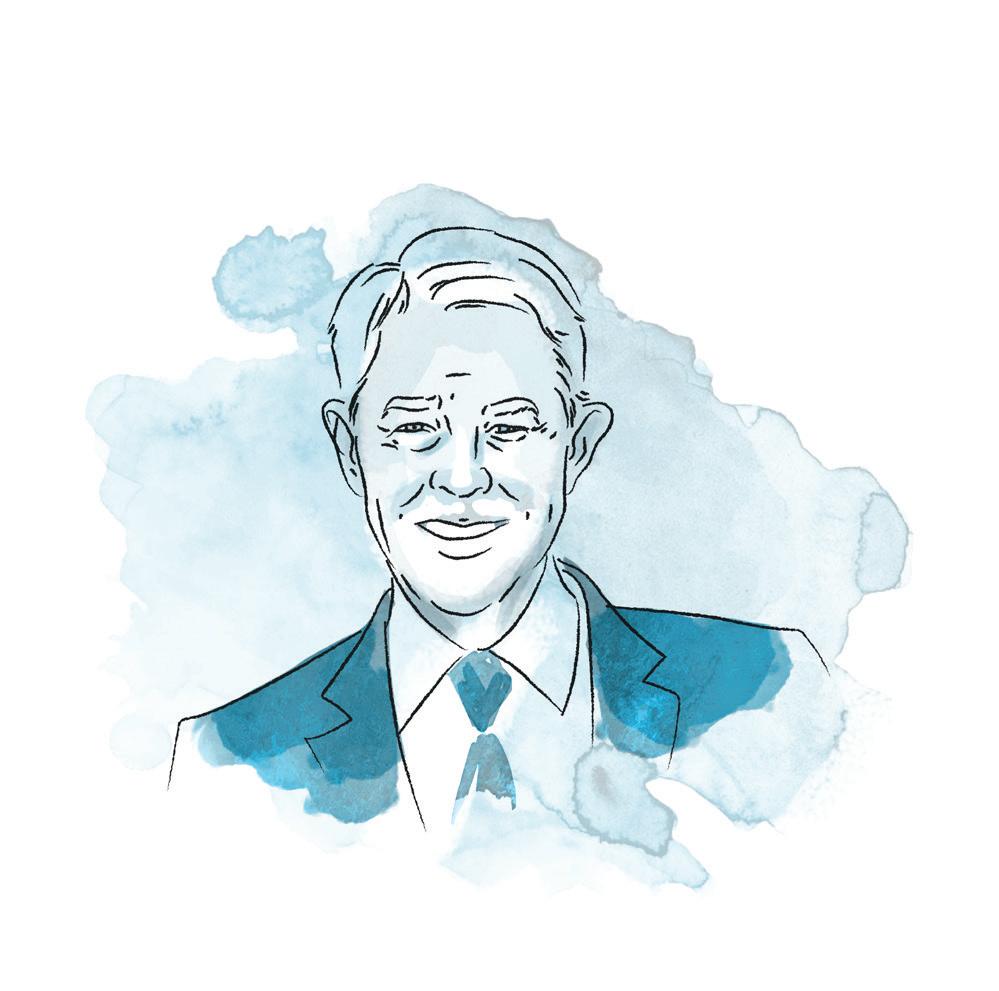
Founded in 1924, Huffines Auto Dealerships now has 10 stores throughout the region that generate more than $1 billion in annual revenue.
second dealership. Running the Chevrolet store in Plano was an experience that he admits was a lot to absorb at the time. “It was pretty overwhelming,” Huffines says. “I didn’t know a lot. There are so many things you learn by doing. It was the time when computers started to run things, and so business became more automated. We’ve been blessed because we could have been a Saturn or Oldsmobile dealer, and we’d be gone.”
story by LAYTEN PRAYTOR illustration by JAKE MEYERS
following in the footsteps of a father and grandfather can be daunting. But Ray Huffines, the third-generation owner and CEO of Huffines Auto Dealerships, never gave it much thought. He was confident that he wanted to continue down the path his grandfather J.L. Huffines Sr. set in 1924 with the company’s first location in Denton. “It’s rare for a family-owned business to survive for 100 years,” Huffines says. “You must have an heir who is both capable of taking over the business and willing to do so. They could be capable but not willing. Or willing, but not capable.”
A young Huffines spent summers working at the dealership his father, J.L. Jr., operated in Commerce, selling his first vehicle for $600. He became a dealership owner at an early age, like his father, who did so in 1950 at age 27 after serving in the U.S. Army during World War II. Ray briefly pivoted from the family business in the early 1980s to work on Ronald Reagan’s first presidential campaign before becoming the personal assistant to former Texas Gov. Bill Clements at the governor’s request.
“I didn’t ever see my career as government or politics,” Huffines says. “But to be with Gov. Clements as his assistant, sit in on meetings, and travel with him while he was a businessman with the largest oil drilling contracting firm in the world was a great experience. I was with him every day for two years, and I learned a lot by watching someone of his ability manage and lead.”
In 1984, at the age of 31, Huffines took over his
Today, there are 10 Huffines dealerships throughout DFW that generate a combined $1.1 billion between the service, parts, body shop divisions, as well as fleet, preowned, and new car sales. The entire operation and its 900 employees are under the direction of its third-generation owner. Huffines is also overseeing significant renovations and expansions at multiple dealership locations over the next two years to the tune of $37 million. The CEO says several factors are necessary to be successful in car sales. “The one thing that comes to mind is the integrity I saw, which was an important part of how my grandfather and father operated,” Huffines says. “That was the foundation. And then the relationships with people. It’s a people business. When the company was much smaller, there were relationships between my grandfather and his employees, customers, and manufacturers because we’re, in a way, partners with them.”
Huffines is not quite ready to pass along the empire he has helped build but says a capable heir is in the line of succession. His son Sam, general manager at the Chrysler Jeep Dodge Ram dealership in Plano, is set to step in as the fourth-generation owner. “When he was at Texas A&M, he was hired to sell Infinitis in Houston,” Huffines says of his son. “When he came back to our operation, he had credibility not just because of his name. The elder Huffines says there’s no set time for the transition. “I’m not going to walk away until he’s ready and willing to take it on,” he says.










Vistra is proud to congratulate Katherine Reilly for being a finalist on the list of D CEO’s Annual Corporate Counsel. We thank her for her leadership, service, and contributions to the community and the Vistra family of companies.

www.vistracorp.com
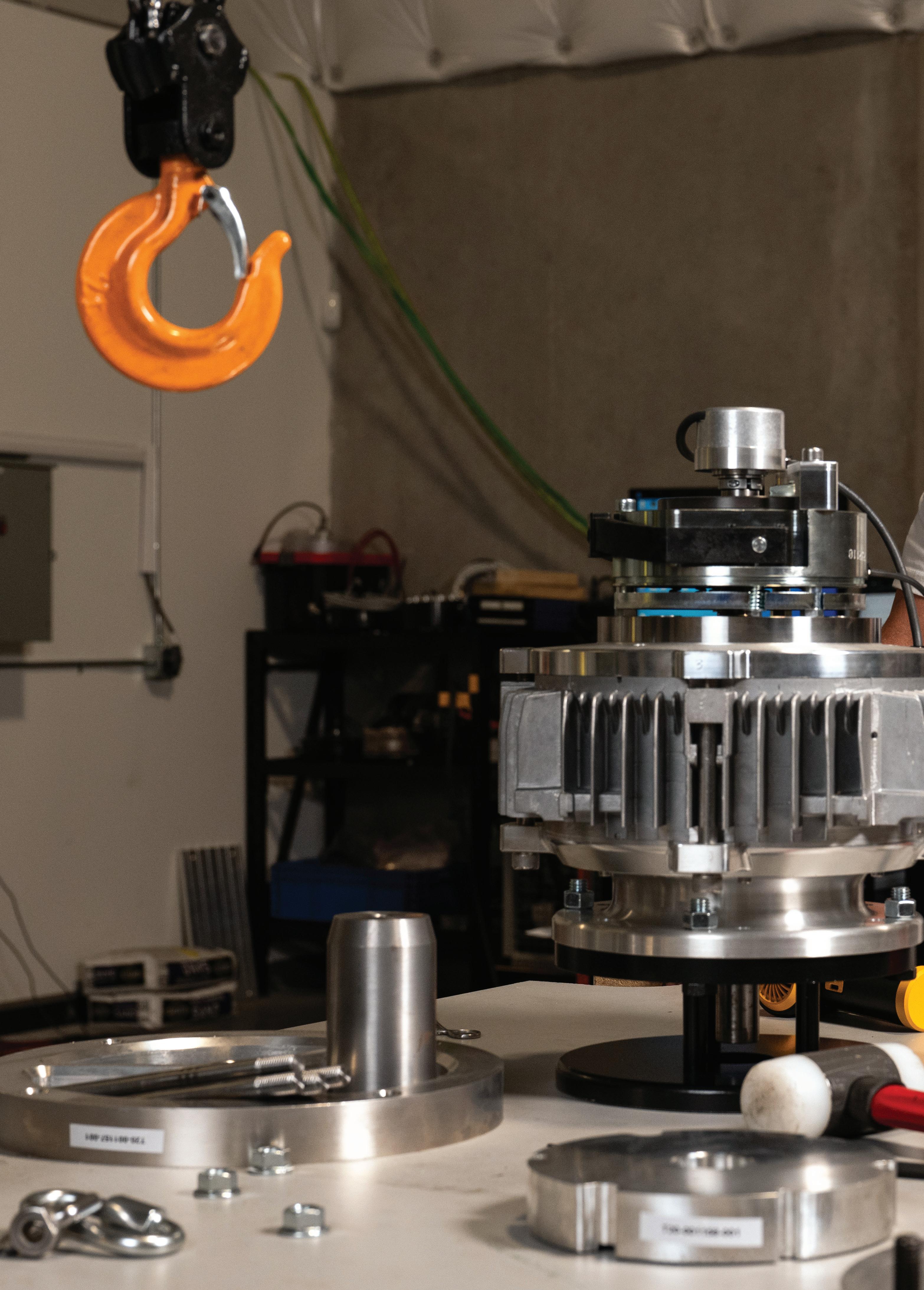
After pioneering live streaming technology, Brad Hunstable has joined his father, Fred, in a quest to revolutionize electrification with their innovative high-performance motors. The Linear Labs cofounders just have to convince customers that they’re not too good to be true.

THE RUNNING JOKE IN THE HUNSTABLE FAMILY was that Fred Hunstable never knew that garages were where you parked your cars. Instead, they served as places for the nuclear and electrical engineer to tinker and invent. Growing up in Granbury under the tutelage of his father, oldest son Brad was fascinated by technology. As a young boy, he wanted to be an astronaut. Then, he began learning how to program on a RadioShack TRS-80. When he was 12, he developed a computer bulletin board system called Dark Realms where users could log onto a host computer through a modem to participate in chat rooms, message boards, and games.
It was a Frankenstein arrangement of hard drives, modems, and PC parts, says Fred, who handled the hardware while his son worked on the software and ran the business. “I had to be creative, figure out how to market it and what products were on there,” Brad says. “People had questions, so I was on call and had to go into the chat rooms. I was the customer service representative.”
says. “We have developed a new technology that the market has never seen before. Our electric machines provide twice as much torque when compared to the best motors today for the same size, weight, and input energy. The even, hightorque output allows designers to eliminate gear reduction. This is an incredible achievement, but one that most don’t believe.”
cadet, there comes a time when a decision must be made. Before beginning their junior year at the academy, nestled along the Hudson River in New York, cadets must choose whether to stay the course or transfer credits to another university. Staying means taking an oath to serve on active duty in the U.S. Army.
This was the decision Brad Hunstable was wrangling with the night before starting his junior year. “It was typical of everybody who was there,” he says. “I was on the fence and really struggling with it. I called my dad, and he said, ‘I would love for you to stay; the long-term benefit is good. But if you want to come home, it’s your decision.’ He communicated what he thought I should do but told me it was my life—and my call. That freed me to make the decision openly with my heart. I decided I was going to stick it through.”
Along with sparking an entrepreneurial drive that persists to this day, the experience and a shared love of inventing ultimately led to another father-son collaboration—one that is set to transform electrification. The two were on a trip to South Africa in 2017 when they were struck by the lack of infrastructure. It prompted them to wonder if they could create a motor with enough torque to provide electricity and access to clean water for those who lived in the villages. “My belief was we could be a part of that equation to help people,” Brad says.
They put their collective brainpower to work and began experimenting with an old windmill that used a shaft that moved up and down to pump out fresh water for cows. What if something like that could be used to generate electricity? Through trial and error, they eventually discovered a way to leverage the up-and-down motion of the shaft to do just that.
“That’s why we’re called Linear Labs,” Brad says. “Our vision was to bring clean water and electricity to rural Africa and South America with one device. It led to an important discovery in motor topology, resulting in the world’s most efficient, highest-torque motors and generators.”
The implications are staggering. About 50 percent of the world’s electricity passes through electric motors. Global robotics and computer science guru Henrik Christensen called the Hunstables’ invention “the holy grail in electric motors.”
Since Linear Labs was founded in 2018, the company has raised $20 million to fund operations. So far, the biggest roadblock has been convincing prospective customers that the innovative motor isn’t too good to be true. “The most difficult challenge has been skepticism about our motor’s performance,” Brad

Electric motors first came on the scene in the early 1800s. Like many new inventions, they were enhanced in the years that followed, but there hasn’t been a significant breakthrough for more than a century.
With his son Brad, Fred Hunstable—an inventor who holds more than 75 patents— was the first to build and test an entirely new methodology in electric motors and generators in 120 years. With the new motors, advanced controllers, high-performance software, and machine learning, Linear Labs is able to unlock at least two times the torque (force) while lowering electrical consumption by up to 40 percent.
The impact goes beyond sustainability, Brad says. “I love clean energy, but I also like doing things that are smarter, cheaper, and good for business,” he says. “The goal is to get this technology in the right industries and applications so we can improve energy utilization.”
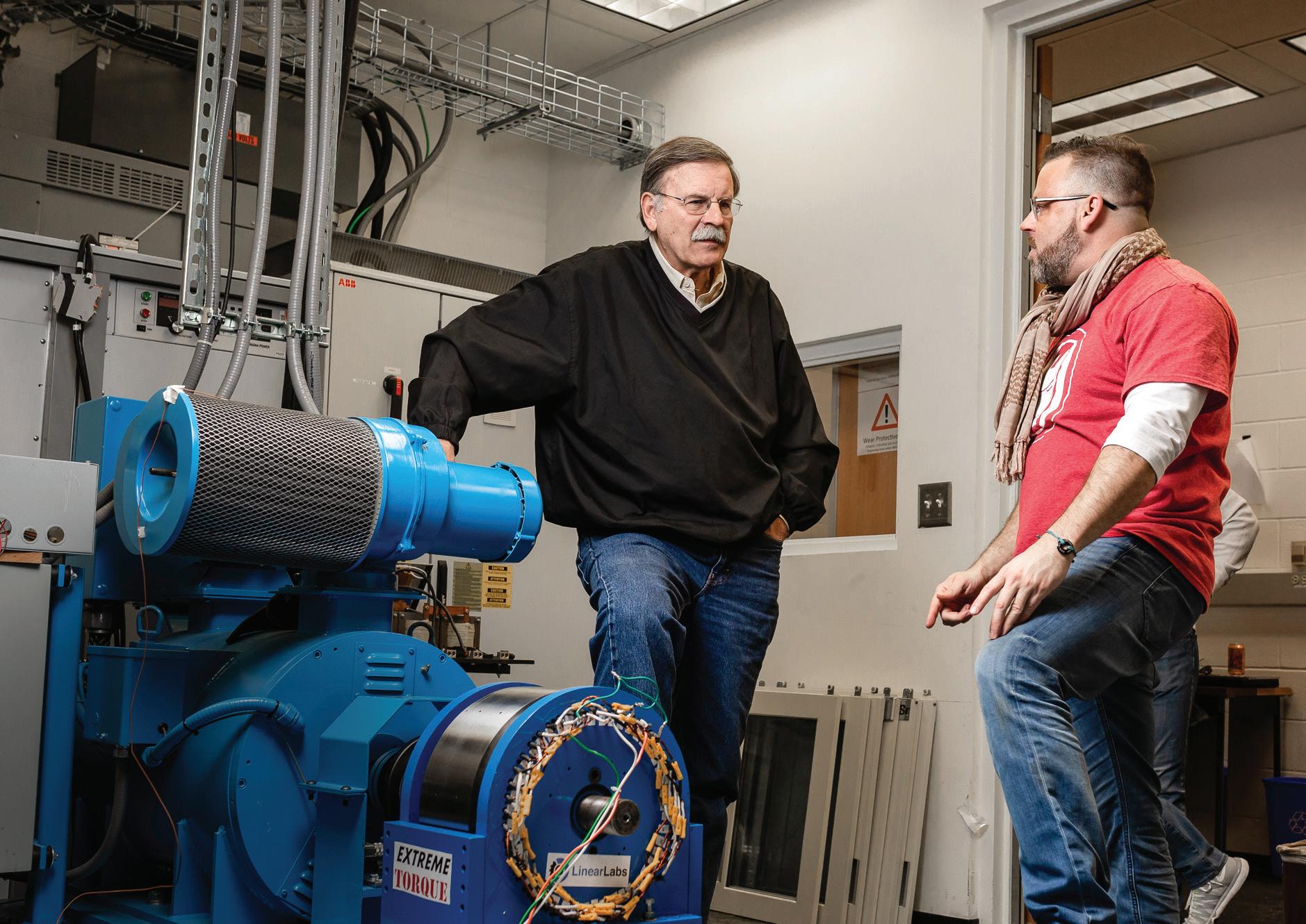
Hunstable had always wanted to attend West Point. After securing a recommendation from former U.S. Congressman Charles Stenholm and surviving an intense medical screening that found remnants of a heart murmur he had since infancy—which almost disqualified him—he was accepted. The experience set the stage for every facet of his life.
Just making it through the academy is an accomplishment. The four-year process is laced with strenuous physical and academic challenges. During Hunstable’s ‘plebe’ year, first-year cadets were not allowed to speak outside their rooms or at meals and had to be able to recite news from the front page of The New York Times. He says as many as 40 cadets quit after the first day. By graduation, what began as a class of about 1,200 had dwindled to roughly 800.
His Army service assignment took him to Columbus, Ohio. While there, he attended The Ohio State University, earning an MBA in engineering and industrial management, taking night classes then getting up at 4 a.m. to go to work. All the while, he was raising a newborn daughter with his wife, April, whom he had met three months before leaving for West Point.
“I had some dexterity from my military experience, but it was stressful,” Hunstable says. “My wife was key; you can’t do something like
that without someone helping you. She was gracious enough with a new baby to allow me to go to school. I knew I was going to get out and that I’d be better positioned in the business world to at least understand how it worked. You must make an investment in certain things for a payoff later. In my experience, the most successful people are the ones that can delay satisfaction for something in the future.”
His theory manifested again in 2007. Hunstable had been working for about a year as an engineering development manager with Ross Perot Jr.’s Hillwood when he decided to take a chance on a dream. An internet video startup side hustle called Ustream, which he developed with fellow West Point grad Johnny Ham, was showing promise, and the duo went to San Francisco to see if there was any “there” there.
At the time, YouTube was rising to prominence with recorded and on-demand videos. Hunstable came up with the idea of building a live version. “I was young, and I knew nothing about fundraising or about Silicon Valley,” he recalls. “I went to Ross Perot Jr. and told him I was going to leave Hillwood and that I was thankful for such an incredible organization. He ended up being one of my first investors.”
WITH USTREAM, Hunstable envisioned a content creation platform similar to the popular
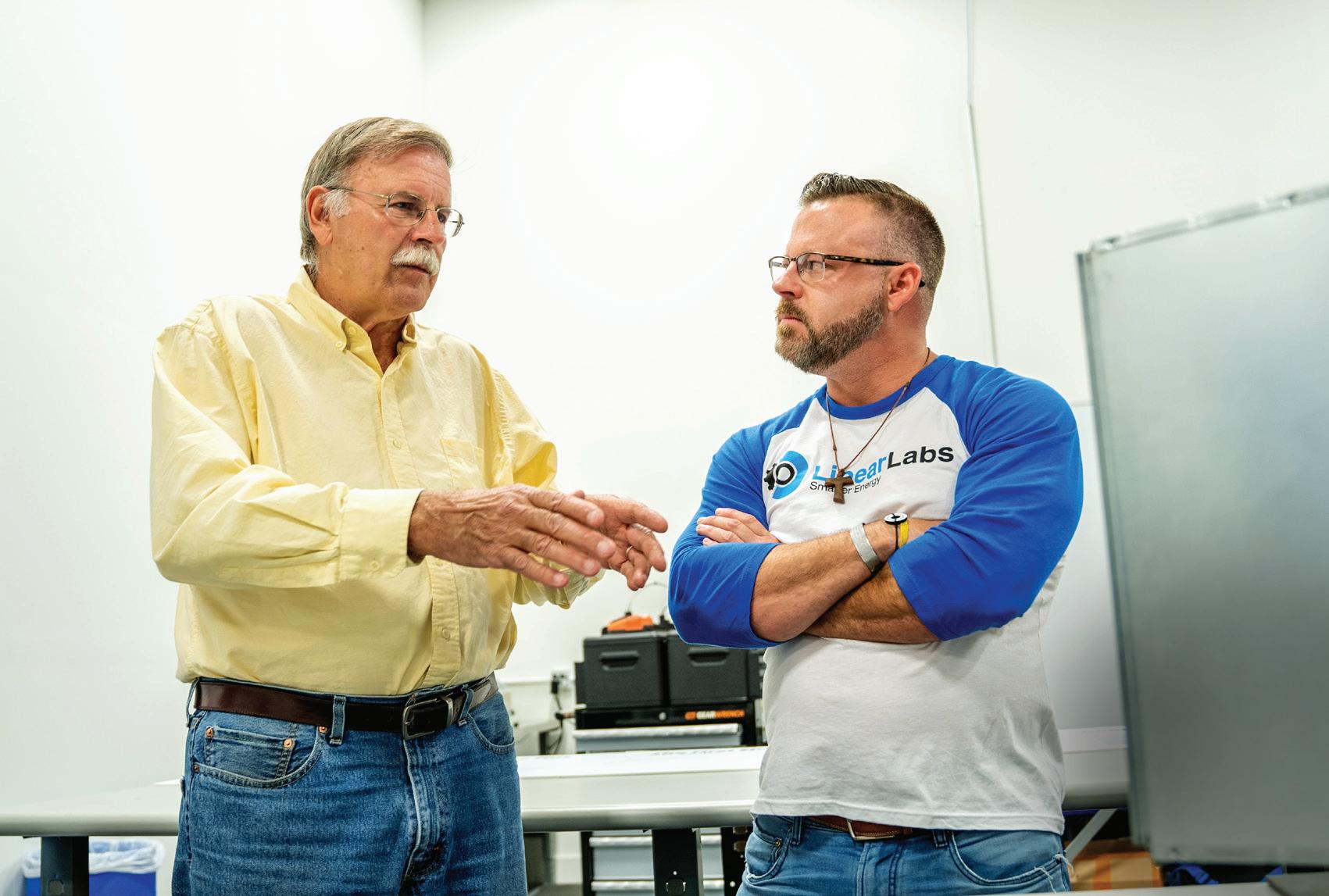
and fast-growing technology that’s readily available today. He began by experimenting with his brother Nathan’s band, Venture, which opened for established acts like Godsmack. The band had been using a webcam to stream its concerts.
“With MySpace, my brother had fans all over the world,” Hunstable says. “He was the bassist. People who couldn’t come see live shows could watch videos and experience concerts live. I would sneak in a backpack, a big camera with a cord, a 3G card, and a laptop, and I would get in the middle of the crowd. I had an earpiece in, and I would talk to my co-founders, asking how it looked. Then I would go into the bathroom and secretly adjust the settings to stream it live.”
As they strived to get their company off the ground, Hunstable and Ham hung a picture of YouTube co-founders Steve Chen and Chad Hurley on the wall of their office to serve as inspiration. Gyula Feher, a native of Hungary who Hunstable met at a tech conference, became a third partner in Ustream. For six months, they canvassed firms along Sand Hill Road, the epicenter of venture capital in Silicon Valley.
“We had a little suitcase with cameras, and we would set up meetings,” Hunstable says.
“We’d walk from one venture capital firm to the next, then the next one, etc. We’d have a taxi drop us off and start walking up the hill to our meetings. It was 50 no’s and one yes.”
The one yes came from Ted Wang, an attorney who agreed to take a small stake of equity in exchange for making the introductions to get the venture off the ground. Soon, things began to take off, and funds began to flow. Ustream closed its Series A funding at $10 million. The Series B garnered nearly $60 million. After a half-year away from his family, Hunstable was able to start crisscrossing the Rocky Mountains each week, flying into San Francisco on a Monday and returning to April and their kids on the weekends. At its peak, Ustream had 350 employees, attracted between 60 million and 80 million views per month, and had its fingerprints all over iconic pop culture and historical moments. It was a part of the paparazzi chasing after Britney Spears in 2006 throughout Malibu. In 2013, Ustream controlled as much as 4 percent of the world’s internet traffic during a live stream of Sony’s launch of PlayStation 4. A student during the 2007 shooting at Virginia Tech University streamed the horrific event in real time. And, in 2008, Ustream became the first company to live stream video through mobile devices, using President Barack Obama’s inauguration as the ideal vehicle to do so.
Ustream’s meteoric rise and pioneering innovation led to the creation of platforms such as Twitch and Skype, forever reshaping how people consume content. Big industry players
After Brad Hunstable went public with his son Hayden’s suicide, he heard from people around the country who shared their own experiences. Wanting to do what they could to help others, the Hunstables created a nonprofit called Hayden’s Corner to spread awareness of youth suicide. They also produced a short film, Almost Thirteen, which shares information about warning signs.
“I got a letter from a guy who said he talked to his daughter about suicide, and she told him that she was depressed,” Hunstable says. “Two months later, she tried to kill herself by taking pills. She had organ failure, but she somehow made it. He called me and thanked me for saving his daughter’s life. I told him I hadn’t, but I appreciated the gesture. He said, ‘No. At the last second, my daughter came downstairs and told what she’d done. Had I not had those talks with her I don’t think she would still be here.’”
took note. In 2016, Ustream was acquired by IBM as part of the IBM Cloud Video division for more than $150 million. “It created generational wealth for many team members,” Hunstable says. “That was incredibly rewarding.”
He officially exited Ustream in 2017, the same year as that fateful trip to South Africa and the spark of what would become his next big thing.
HUNSTABLE GESTURES to a tattoo on his arm. It’s a replica of the last time his son, Hayden, wrote his name on a homework assignment. On April 17, 2020, less than a week before his 13th birthday, Hayden took his own life. Hunstable says the social isolation of the pandemic had a devastating impact on his son.
“I remember just spinning around in a circle, just trying to process,” he says of that tragic day. “It was so beautiful outside, but there was a storm happening all around me. The doctors called the time of death, and I wanted to just grab them and tell them not to stop. There were 20 doctors standing there who were all in shock.
“I began walking down the hallway toward my family,” he continues. “I struggled with when to tell them. My wife was bawling, looking at me, and waiting for me to give the answer. I looked at them and said, ‘He didn’t make it.’”

Hunstable had been away from the house for just about 30 minutes that morning. He kissed Hayden on the forehead before leaving, only to return shortly later to the chaos of what had transpired in his son’s closet, where Hayden’s younger sister found him.
“The person you were dies, and you become somebody new,” Hunstable says, tears welling up in his eyes. “I wasn’t an awful person before, but my priorities in life are much clearer today.
“In business, we can get in the mode of running companies and trying to get to the next stage of building a product and traveling to meet customers,” Hunstable explains. “Sometimes you don’t stop enough to appreciate the beauty in life.”
He and his family launched a nonprofit to help others learn from their grief. (See sidebar on the opposite page.) Through it all, he still had to try to guide Linear Labs through its early stages. “I went through some bad PTSD. I was having nightmares that I had to work through—it was tough,” he says. “How do you help your family heal when you have to heal yourself—on top of having a startup company and trying to keep it surviving during the middle of COVID lockdowns, inflation, and funding crises in the markets?
“It was hard keeping the wheels on the bus,” Hunstable says. “The only thing I could do was continue to look inside myself and believe that there was something bigger than what I could understand in this world. Without faith, I don’t know how I would have gotten there. I’ve concluded that Hayden is OK. We may not be, but he is.”
Former EY partner Debra Von Storch got to know Hunstable when he was honored in the firm’s 2019 Entrepreneur Of The Year program. “Brad has very grand aspirations, but it’s in the spirit of really helping others,” she says. “He is very humble but brilliant and driven. Normally, you don’t put all of that together with humility. What he has gone through with his trials and tribulations to help others despite his pain is remarkable.”
Hunstable still has sights set on returning to South Africa one day to bring water and clean energy to villages. But the possibilities of what he and his father are creating with Linear Labs are much bigger.
“I believe the technology we built can have an impact on the global energy landscape,” Hunstable says. “Energy is increasingly finite. It comes with some costs—pollution, scarcity, it’s used in war as a weapon, and people die because they don’t have access to energy. I believe the technology we built can be a part of that solution.”
After starting with light electric vehicles, the innovative motors have been modified for larger industrial markets, including wind turbines. Through it all, Hunstable strives to keep things in perspective.
“I love Linear Labs, and I love trying to create economic value to solve cool problems. But life is so much more than that. If you don’t have your family and your health, nothing else beyond that matters.”




Just 18 years ago, Lisa Atherton was staying up until 3 a.m. managing the books of an ice cream shop she and her husband owned.
Now, she’s CEO of Fort Worth-based Bell, a leading helicopter manufacturer that’s on track to hit $3.5 billion in revenue this year.

story
by
BEN SWANGER
LISA ATHERTON TEARS UP THINKING ABOut her customers. There is one little girl she will remember forever. Chemotherapy had stripped her youthful hair away. She wore a bandana to cover her scalp. Her father would bring her in every Wednesday after her cancer treatments. In between those visits were the teenagers in search of a sugar rush and lovebirds on a date night. These were the people Atherton scooped ice cream for just 18 years ago in Williamsburg, Virginia, at a Cold Stone Creamery she and her husband, Jim, owned and operated.
So, in 2024, as she sits in a corner office overlooking the expansive headquarters of Bell in Fort Worth, which houses 5,000 of its 8,350 global employees, Atherton is still in awe of how she made it to that seat. “I didn’t have aspirations, nor did I ever believe I’d be a CEO,” she admits. And the odds were stacked against her. According to the International Aviation Women’s Association,

women make up just 3 percent of the industry’s C-suite.
But by no means was Atherton plucked from obscurity to run one of the world’s largest manufacturers of helicopters amidst a pioneering $100 billion project for the U.S. military. Her stint as an ice cream franchisee was a side gig after earning an MBA from The College of William & Mary in 2004.
On a summer evening in the mid2000s, Atherton and her husband were out for a walk and came across a Cold Stone with a line of customers wrapped out the door and around the block. “We had FOMO and jumped in line,” she says. “We later did some research and decided to take my MBA out for a test drive.”
Jim, who was recently retired after serving for 25 years in the U.S. Air Force, managed the day-to-day operations of the franchise. Atherton, who was doing business development for a weapons program at Textron Systems—the defense, homeland security, and aerospace division of the grander $13.7 billion Textron Inc.—worked on the ice cream business after hours, often staying up until 3 a.m. doing the books and making sure the store was stocked with everything it needed.

All the while, the couple—who had been married for seven years with three children, all of whom were brought into the marriage by Jim—were trying to have a child of their own. But the doctors told the couple they had a six-in-one million chance at naturally conceiving a child. “We shelved that dream and threw all our energy and efforts into Cold Stone,” she says. “But one day, I wasn’t feeling great, and it turns out I was pregnant. So, in the truest of senses, it was a miracle.”
In 2008, amidst trying to open two other Cold Stone Creamery stores, the couple decided instead to sell off their ice cream interests. The entrepreneurial lifestyle just wasn’t conducive to raising a newborn. “I didn’t make any money in the venture,” Atherton says with a

laugh. “In fact, I think I might’ve lost a little. But if you ever need good marriage counseling, go into business with your spouse. You really learn to communicate well, problem-solve, and figure out how to do things from different perspectives together.”
Following the sale, Atherton sped up in her career ascension while Jim settled into being a stay-at-home dad. In short order, she moved from being a manager at Textron to vice president of business development. In 2011, she was named VP of area attack systems for Textron Systems, which put her in charge of foreign military sales in multiple countries. As fast as she was rising, she still had no designs on the C-suite. “My dream job was to be the V-22 program manager,” she says. (The Bell Boeing V-22 Osprey tiltrotor is a $70 million-per-unit military aircraft with a fleet of more than 450.) In 2013,
Bell, a Textron subsidiary, offered her that exact position. “In my mind, I made it,” she says.
“A
Atherton’s meandering career path began at an early age. Both of her parents were educators. Growing up in central Florida, she had no familial influence pushing her to enlist in the military. She only ended up at the Air Force Academy because of a torn ACL. A high school basketball standout, she tore the ligament in her knee her senior year, and the academy was the only institution willing to honor its scholarship offer. “I needed the rigor,” Atherton says. “I thought if I went to a normal college, I would probably be on the five-year plan instead of the four.”
“The leadership qualities necessary to manage a big workforce begin and end with a cohesive culture. Lisa eats, drinks, and sleeps that stuff.”
Her knee issues persisted, and her college basketball career ended after a second ACL tear during her freshman year in Colorado Springs. So, she threw herself into her studies and responsibilities as a cadet. Among other things, she spent a year on a special assignment developing a curriculum for sexual assault awareness in the military. “I have a strong sense of justice,” she says. “My Myers-Briggs type is an ESTJ [Extroverted-Sensing-Thinking-Judg-

ing].” After graduating, Atherton began her service to the United States in the contracts officer role.
Fast forward to 2017, after the ice cream business and the climb to the V-22 position at Bell, it was a literal “tap on the shoulder,” she says, that catapulted her forward. Ellen Lord, then president and CEO of Textron Systems, was set to leave the company to join the U.S. Department of Defense. After a regular, everyday company meeting, the CEO of parent company Textron, Scott Donnelly, pulled Atherton aside. “I want you to come in and take over [for Ellen],” he told her. “Isn’t that a stretch role assignment for me?” she asked. “I don’t see it that way,” Donnelly concluded.
Leading Textron Systems essentially consisted of managing seven small businesses at once, ranging from piston engine manufacturing in Pennsylvania and its ship-toshore hovercraft division in Louisiana to microelectronics in Maryland and F1 fighter training in Texas. “Having to work on all that in one day was wild, complex, and yielded the most career growth for me,” Atherton says.
After more than five-and-a-half years at the helm of Textron Systems, she moved back to Bell as chief operations officer. Four months into that post, she was named Bell’s president and CEO. “I’ve known Lisa for 12 years, and I think I wagered a couple of times along the way that she would one day be the CEO of Bell,” says Jeff Schloesser, who runs eight different departments at Bell as the executive vice president of strategic pursuits.
With 13,000 Bell helicopters in circulation, the company has more than Airbus (12,000), a global corporation that generated $72 billion in revenue in 2023.
“Lisa is a culture carrier, so I’m not surprised at all to see her rise in the ranks,” says Ken Hersh, executive director of the George W. Bush Presidential Center, which named Atherton one of 60 Presidential Leadership Scholars in 2017. “The leadership qualities necessary to manage a big workforce begin and end with a cohesive culture. Lisa eats, drinks, and sleeps that stuff.”
“THE WEIGHT OF RESPONSIBILITY”
Last year, Bell notched $3.15 billion in global revenue. The company is on pace to hit $3.5 billion in 2024. But Bell is amidst one of the most important contracts in
the 90-year-old company’s history—and one of the most important U.S. military contracts right now— that could skyrocket production. “What we do right now will dictate how successful we are for the next 20 to 25 years,” says Atherton, who recently launched a strategic planning process focused on what Bell will look like in 2035.
The U.S. Army has tasked the Fort Worth company with pioneering the future of assault helicopters. Back in 2012, Schloesser—a retired two-star general and the first director of the War on Terror planning office within the Department of Defense following 9/11—was asked by Bell to help design a new helicopter. Dubbed the Future Long-Range Assault Aircraft, the company is developing a helicopter to replace the Black Hawk, an aircraft the U.S. Army has more than 2,000 of, but that has sparked a plethora of safety critiques. Over the past decade, Army data examined by Military.com reveals that, during training alone, 60 fatalities have occurred due to Black Hawk crashes.
“Conflict has changed dramatically,” says Schloesser, whose office is closest to Atherton. “When I was in Afghanistan and Iraq, we needed more speed and a lot more range. Flying the Black Hawk, we had to establish outposts along the flight to refuel. This upgrade is long overdue.”
The U.S. Army is expected to invest between $70 billion and $100 billion over the next 50 years in the FLRAA production. Bell is tracking toward launching the Black Hawk replacement, the V-280, in the early 2030s. “This aircraft will fly twice as far and twice as fast as a regular helicopter,” she says. “When we have threat scenarios in the Indo-Pacific region, you do not always have the benefit of having a base where you could have a bunch of helicopters staged. So, having a platform that can allow you to have a ‘standoff’—the ability to reach the action and reach the fight with top range and speed—is paramount.”
The helicopter will eventually be used by all U.S. armed forces, including the Space Force. The weight of the project is not lost on Atherton. She knows what she and her team do behind the scenes every day—and how Bell’s engineers and developers execute—could be a life-or-death difference for a civilian following a domestic accident or a soldier after becoming wounded on the battlefield. “Do not for a second mistake it when you see me smiling in this job every day,” Atherton says with intensity. “The weight of responsibility I carry is a lot. I have many sleepless nights thinking about all our priorities.
“It’s not just me who understands this,” she continues. “It’s all 8,350 employees at Bell who have to crush this project. The future depends on us. Our warfighters depend on us. The next generation of oil and gas explo -
ration depends on us. The next generation of search and rescue depends on us.”
The military has been flying autonomous planes for decades in isolated airspace. But a commercial passenger flight has yet to take off without a pilot in the flight deck. Earlier this year, Bell revealed a helicopter based on its 429 model that is designed to be an autonomous flight demonstrator. Dubbed the Aircraft Laboratory for Future Autonomy, at this stage, the company is just using the new helicopter as a test unit for what is called fly-bywire. “We’re writing software flight control laws that can be applied to any helicopter,” says Atherton. “The thing with autonomy in a vertical platform, if you were to have human beings flying in it, you must get that right. There are so many dynamic components at play when you’re trying to beat gravity into submission. So, at this stage of autonomy, you’re always going to want to have a backup safety pilot. But the technology is progressing, and we’re trying to push into it at Bell.”
“BRING IT ON.”
Bell’s big contract win was met with outrage by those who opposed it. For Atherton, the decision was straightforward: it came down to the simple doctrine of quality. “The business principles are the same, whether you’re selling waffle cones or helicopters,” she says.
The Army’s decision to choose Bell’s design, an aircraft that can hover like a helicopter and fly like a fixed-wing plane, befuddled lawmakers in Connecticut and decision-makers at Lockheed Martin-owned Sikorsky, which is based in Stratford. After all, Sikorsky, which bid on the contract, produced the Black Hawk helicopter. Why wouldn’t it get a chance at replacing its own product?
In a 38-page document made public by the U.S. Government Accountability Office, the U.S. Army declared FLRAA renderings from Sikorsky and its partner on the project, Boeing, as “unacceptable” for engineering, design development, and architecture. Despite Bell’s projected cost of nearly $8.1 billion and Sikorsky/Boeing’s just $4.445 billion, the discount was not enough for the Army to choose what it deemed an inferior product. (Sikorsky and Boeing have built 90 percent of the U.S. Army’s current military rotorcraft, which have racked up more than 15 million flight hours.) Bell’s architecture, engineering, and design development were noted as “acceptable.” The Source Selection Advisory Council found that Bell’s design was “the most advantageous solution and best value to the government.”
“They did protest, but I think the technology inside [Sikorsky’s] aircraft was not going to be appropriate on the battlefield,” Schloesser says.
Sikorsky and Boeing reportedly considered suing the U.S. Army for its decision to award the contract to Bell. Ultimately, neither company pursued legal action. Not only did Sikorsky lose out on the project that could have 11 zeroes attached, but it also lost out in the near term on a $50 million incentive package the state of Connecticut committed had it won the business.
“We have a DNA about us that screams, ‘Bring it on,’” Atherton says. “Our aircraft is a leap in technology, a leap in warfighting capability, a safer aircraft that can keep the military out of harm’s way because it is faster. And because of its speed, it can also get soldiers to medical aid much faster.”
As a veteran of the Air Force, for Atherton, that’s what it’s all about—taking care of her brothers and sisters in arms. “My hope is that 20 years from now, no one remembers Lisa Atherton,” she says. “I want them to remember that the decisions I made in 2024 and 2025 were the right ones that set them up for success long into the future.”
















































As corporate counsels continue to have a bigger role in C-Suite decisions, a diverse career background can be an important asset to success as a business adviser.

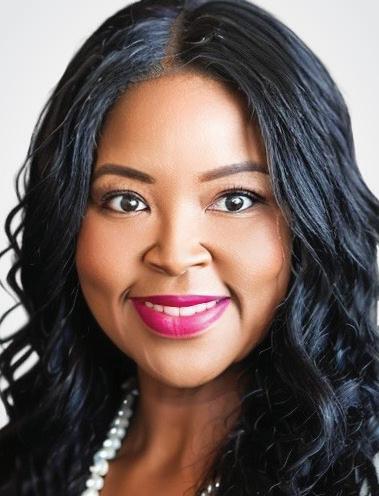









DURHAM MADE EVERY ROOkie mistake possible in law school. She didn’t focus on building a network, didn’t join many associations, and only had experience with Louisiana’s unique Napoleonic code-inspired civil law system, which is di erent than other legal systems across the nation. At first, it looked like her mistakes wouldn’t matter. She clerked with an energy company in Louisiana and was o ered a position to go in-house after graduation. But when Hurricane Katrina hit in 2005, it washed away her hopes of a position with the company that was temporarily relocating its headquarters and rescinding future o ers due to the hurricane’s devastation.
“I started over,” Durham says. “I still dreamed of being a corporate tax lawyer, but by necessity, my path was just a little di erent than I expected.”
She moved to Dallas, took a job with the U.S. Department of Labor, and enrolled in SMU’s Master of Laws program, focusing on taxation. This time, the “extrovert’s extrovert” was on a mission to build her professional network in a city where she knew no one.
“I’ve never met a stranger and can talk to anybody about anything at any time,” Durham says. “I had to figure out what was what because the traditional method of finding a job was not going to be my story.”
Durham is now in a role that’s similar to the one she wanted in law school, as an in-house lawyer at an energy company. But her path to becoming assistant general counsel at Constellation Energy Generation was anything but traditional. As D CEO reviewed nominations for the 2024 Corporate Counsel Awards program, it became clear that a winding road to in-house counsel is not unusual. The well-worn trail from law school to big firm to in-house with a firm client, while still popular, is far from the only way to find success as a corporate counsel.
The diverse experiences and challenges faced by those on the winding road often become assets in the increasingly complex role and help them become a strategic partner to others in the C-Suite.
Durham was inspired to be a corporate lawyer by watching Clair Huxtable and her ability to balance her role as a mother and lawyer on The Cosby Show. She eventually found her way to the consulting firm Deloitte, where she spent 15 years in the company’s tax division. She feared that she would be pigeonholed into a specific practice area if she worked at a big firm, and Deloitte allowed her to tackle diverse projects. She worked with small businesses, nonprofits, and Fortune 10 companies.
“Being nimble, flexible, and agile are key characteristics,” Durham says. “You never know what will happen. My whole career has been about the pivot. Everything I had planned out, none of it happened that way.”
Casey Fraser, on the other hand, didn’t dream of becoming a lawyer. The son of a former National Hockey League player and head coach, his eyes were on the ice. When his hopes of playing pro hockey dried up, he still wanted to be close to the game he loved and worked for the Dallas Stars in the team’s legal department as an operations assistant.
Fraser enrolled in a dual MBA/JD program with his eyes set on a role with a corporation, equipped with dual business and legal skillsets. He now serves as senior legal counsel for Employer Direct Healthcare, which provides solutions to employers to reduce healthcare costs. But it was hockey that led him there.
Fraser scored a meeting with NHL franchise owner and Dallas businessman Tom Dundon, whose company, Dundon Capital, had purchased EDH. The healthcare business needed an attorney who understood operations, and he took a leap of faith to become employee No. 50 at a company that now has 500 workers and is valued at $1 billion.
Fraser’s father’s coaching career took the family all over the world, and skipping the obligatory time at a big law firm put him on a di erent trajectory than most corporate lawyers. He sees travel and his meandering career path as advantages. “It allows me to think di erently compared to someone who went through the big machine,” Fraser says. “I’m a poster child for not needing a specific experience in your past or skill set. Have a great attitude, work hard, and be a nice guy, and a lot of doors will open.”
Chief Legal O cer Sharon Johnson of MODE Global took a more circuitous route to her role. But for her, it was intentional. Early in her career, a mentor told her to start with a comprehensive foundation and try to understand many facets of a business to advance. She took positions in marketing, finance, project management, and sales at Verizon before earning her law degree.
While working as the only non-attorney on a team of contract managers at Verizon, she discovered a love for law. Her colleagues took her under their wing, teaching her how to draft and negotiate contracts, and she was assigned to negotiate a multimillion-dollar agreement in her mid-20s. “I was hooked,” Johnson says. “I loved drafting and negotiations. It was a bit like art to me as it involved so much creativity.” The experience convinced her to return to school and earn a law degree at night while working more than 50 hours a week in her day job.
Johnson went on to earn an MBA and land in-house counsel roles with tech firms before joining parcel logistics firm MODE Global. She looks back on her diverse roles as strengths rather than distractions from her advancement. “The roles honed my ability to empathize with internal and external clients, fostering patience and a deep understanding of their needs and pressures,” she says. “This perspective is crucial when navigating the complexities of legal advice and business strategy, allowing me to serve not just as a lawyer but as a trusted business adviser.”
Although most corporate lawyers start with an interest in the law or business, others arrive at their positions from more diverse backgrounds. Carolyn Lam says she had it all figured out. After failing pre-calculus for the third time and realizing she wouldn’t be a doctor as her mom had hoped, she decided to become a professor of literature. But when the idea of a liberal arts career path gave her pause, she saw the light in the form of a constitutional law course, where a professor enthralled her with stories of her pro bono work.
Lam diverted to law school, but a corporate role wasn’t on her radar. Instead, she took a job with a plaintiff’s employment firm, representing employees in civil rights cases. She enjoyed the work, but managing 60 cases at a time meant she spent more time putting out fires than changing the world as she had hoped.
So, when an opposing counsel recruited her to a firm that did labor and employment defense, she moved to the other side. She eventually found her way to in-house work at a variety of companies. Today, Lam is deputy GC and chief compliance officer at Ecobat, a global leader in producing lead, lead alloys, and lead battery recycling. “My career progression has always been about how I learn how to solve bigger and better problems,” she says.
Her career growth makes her a unique asset as she knows what it is like to sit on the other side of legal disputes and has experience working with employees at all levels of a company. As she solves more complex problems in her legal career, she maintains a philosopher’s passion for aligning her career with life’s most essential questions. “It’s important for me to work somewhere that’s mission-driven because I want to make sure that the problems I’m solving align with my values.”
The winding road to corporate counsel leadership isn’t efficient nor easy, but the invaluable experience obtained on the circuitous route proves pertinent. “Although it was hard—and there were setbacks—it was well worth it,” says Johnson of MODE Global. “I asked a lot of questions, found great mentors, drank from the fire hose, and grew personally and professionally along the way.”
GENERAL COUNSEL (LARGE)
Lillian Kirstein, 7-Eleven Finalists: Von Hays, Comerica Bank
GENERAL COUNSEL (MIDSIZE)
Amy Raney Yeager, Children’s Health Finalists: LaToyia Pierce Frink, FirstService Residential
GENERAL COUNSEL (SMALL)
Sharon Johnson, MODE Global Finalists: Farah Bhayani, G6 Hospitality; Joseph McCoin, Coca-Cola Southwest Beverages/Arca Continental; Jessica Presnall, Big 12 Conference; Heather Randall, Trintech
GENERAL COUNSEL (SOLO)
Daniel Carter, RailPros Finalists: Jason Cupo, JPI Cos.; Fibbens Addo Koranteng, Southwest Transplant Alliance
DEPUTY/ASSOCIATE GENERAL COUNSEL (LARGE)
Lacy L. Durham, Constellation Energy Generation Finalists: A. Shonn Brown, Heidelberg Materials, North America; Veronica R. Cartwright, Oncor Electric Delivery
DEPUTY/ASSOCIATE GENERAL COUNSEL (MIDSIZE)
Stephanie Bryant, Orthofix
DEPUTY/ASSOCIATE GENERAL COUNSEL (SMALL)
Carolyn Lam, Ecobat Finalists: Rebecca Chartan, MV Transportation; Kayla Coleman, Buckner International; Heather D. Johnson, Energy Transfer; Delphina Yuen, Outschool
IN-HOUSE COUNSEL
Jenny Allenbaugh, PespiCo/Frito-Lay Finalists: Sadaf Abdullah, Ericsson; Olesja L. Cormney, Toyota Motor North America; Nicola Hobeiche, TaxAct; Bria Riley, Keurig Dr Pepper
CHAMPION OF DIVERSITY
Altresha Q. Burchett-Williams, AT&T
OUTSTANDING COMMUNITY SERVICE
Mitzi Brown, BRIX Holdings
UP AND COMER
Casey Fraser, Employer Direct Healthcare Finalists: Samantha Mori, Texas Capital; Katherine Reilly, Vistra Corp. Chandler Rognes, Goosehead Insurance
Bell Nunnally would like to congratulate the honorees of the 2024 D CEO Corporate Counsel Awards on this well-deserved recognition. These talented individuals are pillars of our industry. Serving our clients and friends of this in-house community is an honor. We are proud to sponsor this important event for the fifth consecutive year.
2323 Ross Avenue, Suite 1900 | Dallas, Texas | 75201 | bellnunnally.com

“the world of professional sports is exhilarating and growing at a rapid pace. It brings people together and builds a sense of community. If there was one thing I could change about the industry, it would be to make professional sports more inclusive on and off the field. We need to see more women’s sports being talked about and given the media spotlight to the trailblazing women who are changing the game in every sport. We are starting to see more stories of women athletes making an impact. With the success of the FIFA World Cup and the WNBA, more women are being seen in the spotlight. At the NFL, we are working to elevate the sport of flag football to include people of all ages, genders, ethnicities, and ability levels in the sport. There is a bright future for the business of sports if more women’s stories are told and more women’s sports are put in the spotlight.” —As told to Layten Praytor

Executives are increasingly focused on brain science to maximize effectiveness, and investors have taken note.
story by WILL MADDOX
Tthe latest trends in personal development and optimizing performance revolve around brain health. Distinct from mental health, which deals with disease or brain conditions, brain health focuses on productivity, connectivity, clarity, resilience, and emotional balance.
UT Dallas’ Center for BrainHealth has been investigating and investing in the space for decades, building mountains of evidence to show significant gains in brain performance through exercises, habits, and behaviors to enhance everyone’s brain health, from adolescents to CEOs.
Dallas-based architecture firm HKS has been working with the Center for BrainHealth from the beginning. Employees are tested and trained to improve cognitive function, with impressive results. And there’s a ripple effect: when the company works with clients, it helps them design space with brain health in mind. “As architects, the only
thing we have are our brains,” says Dan Noble, chairman and CEO at HKS. “How do we get the most out of that? What do we do to help employees get the most out of their most precious resource?”
The opportunities for making brain health profitable are enormous, says Sandra Bond Chapman, chief director of the Center for BrainHealth. “Better brain health benefits every single person,” she says. “As the evidence mounts, it will soon become the norm for organizations to invest in this form of talent building for advancement at every leadership level, as well as improving brain health and performance across the entire workforce.”
When business leaders turn their collective eyes toward a product, service, or movement, investors follow. And that’s what’s happening in the brain health space. Services and technology that improve brain health are attractive investment opportunities for several reasons.
First is the ubiquity of opportunity—nearly everyone can benefit from expanding brain peak years, regardless of age or occupation. Additionally, technology is sure to play an essential role in measuring and improving brain health, and the companies that can capitalize in that space have much to gain.
The Center for BrainHealth developed the BrainHealth index, which gives a composite score to a person’s brain health, created by an algorithm built from 20 established assessments. Its Strategic Memory Advanced Reasoning Tactic is built on 30 years of research with patients at all levels of organizations. The center has worked with more than 90,000 people over the years and offers brain health programs to address needs as diverse as those suffering from Alzheimer’s to college students and military veterans, as well. It has been shown to improve cognitive performance, well-being, and ability to engage socially. Neural imaging of the brain has shown increased brain blood flow and network synchronicity, which is the ability of the brain to simultaneously organize collective action.
These tools and others in development are examples of the types of technology attracting interest from business leaders and investors. “The conversations happening now about investing in brain health and performance were simply
not happening 10 or even five years ago,” says Andrew Nevin, inaugural director of Brainomics Venture, which examines the economic impact of improved mental performance. “The now-demonstrated reality of neuroplasticity— your brain’s life-long ability to change depending on how you use it and care for it—has ignited interest across the investment community.”
Tolleson Wealth Management Chief Investment Officer Eric Bennett is chair of the Center for BrainHealth’s capital campaign and has experience with the investment flowing toward the space from a wealth management and organizational perspective. As a money manager for family offices, Tolleson continued to see growth in families aiming their investment toward innovation and biotech. Although still early in the cycle, he says the last two years have brought a massive development in the science behind brain health, which has attracted more capital into the space. The medical device industry will likely be where brain health investing gets its big break as medical entrepreneurs look to do everything from improving performance to fighting Alzheimer’s disease. “It has created hope for the investment ecosystem about the brain and caused investment funds to look at the brain,” Bennett says. “Three years ago, I was aware of just one venture fund that focused on the brain. Now I am aware of 20 pure venture capital funds that do so.”
For a nonprofit like the Center for BrainHealth, which focuses on research and fueling the science behind cognitive improvement, increased investment into brain health and biotech means greater opportunity to partner with companies to turn the research into larger-scale impact and profits. If companies like HKS are utilizing brain science to improve performance, there is a business opportunity waiting to be seized by a savvy entrepreneur. “As public comprehension of brain health and performance increases, combined with the power of AI and machine learning, we expect to see exponentially higher interest in our mission from public and private funding sources,” says Stephen White, the center’s chief operating officer. “We remain committed to new discovery and quickly translating it into practical tools that people can leverage to create broad impact.”
As companies pay more attention to the health and acuity of the brain, investors are noticing, too.
Palo Alto-based VC Newfund has a fund called Heka that invests in innovative brain technology. Over the next five years, it plans to invest in seed and Series A rounds of 20 to 25 companies that improve brain capital or an individual’s social, emotional, and cognitive resources.
With a $126 million grant from the National Institutes of Health, Salk Institute scientists have launched the Center for Multiomic Human Brain Cell Atlas to classify brain cells into subtypes and map them to better understand how our brains work and age.
The Dallas-based firm advises wealthy individuals and family offices. Innovation, AI, and biotech are growing investment areas, with clients increasingly interested in philanthropic funding of brain health.
edited by LAYTEN PRAYTOR
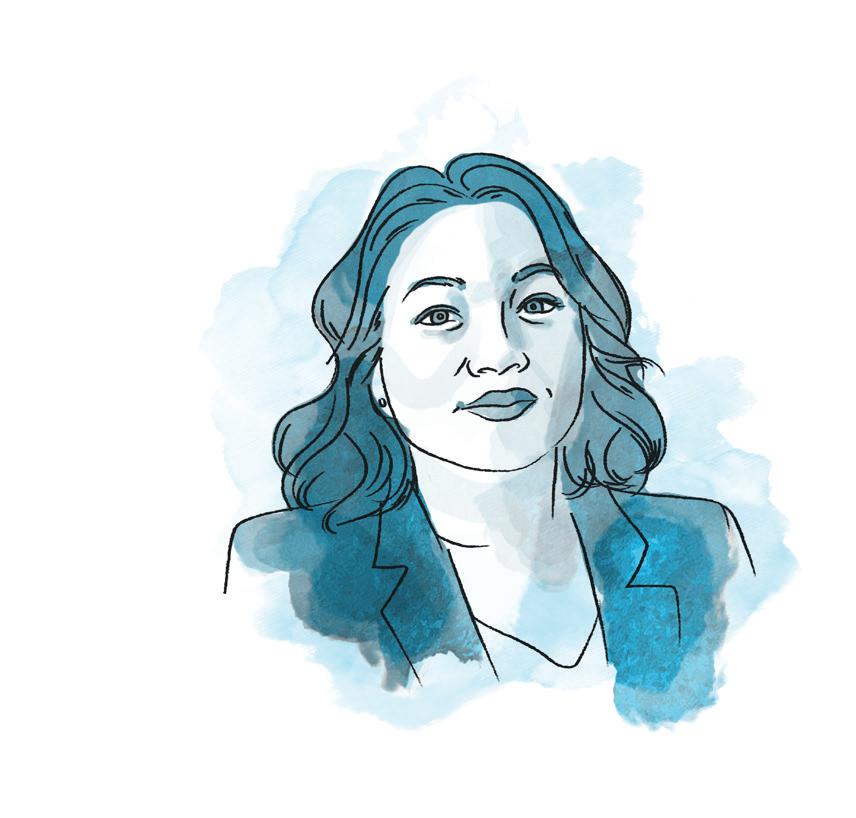
Managing Counsel, Employment
TOYOTA MOTOR NORTH AMERICA
“I will never forget how I felt when I read Simon Sinek’s Start with Why. It was such an ‘a-ha’ for me. I’m a big believer that magic happens when we can connect an individual’s personal ‘why’ with the company’s big picture ‘why.’ Of course, you need the scaffolding of empathy, building trust, and fostering open communication— but purpose-driven leadership inspires commitment and motivation. It is how you keep people engaged in the mission. It has to matter to them.”
illustrations by JAKE MEYERS

“Success starts with having a great team. Find great people, do your best to retain them, and, if possible, take them with you to the next gig. It’s important for leaders to take a step back and understand that most of those working for you aren’t there to fill the role you assigned and carry out tasks but to learn and become better professionally. This ambition is often overlooked and creates turnover among good people when they feel they’ve hit a ceiling.”
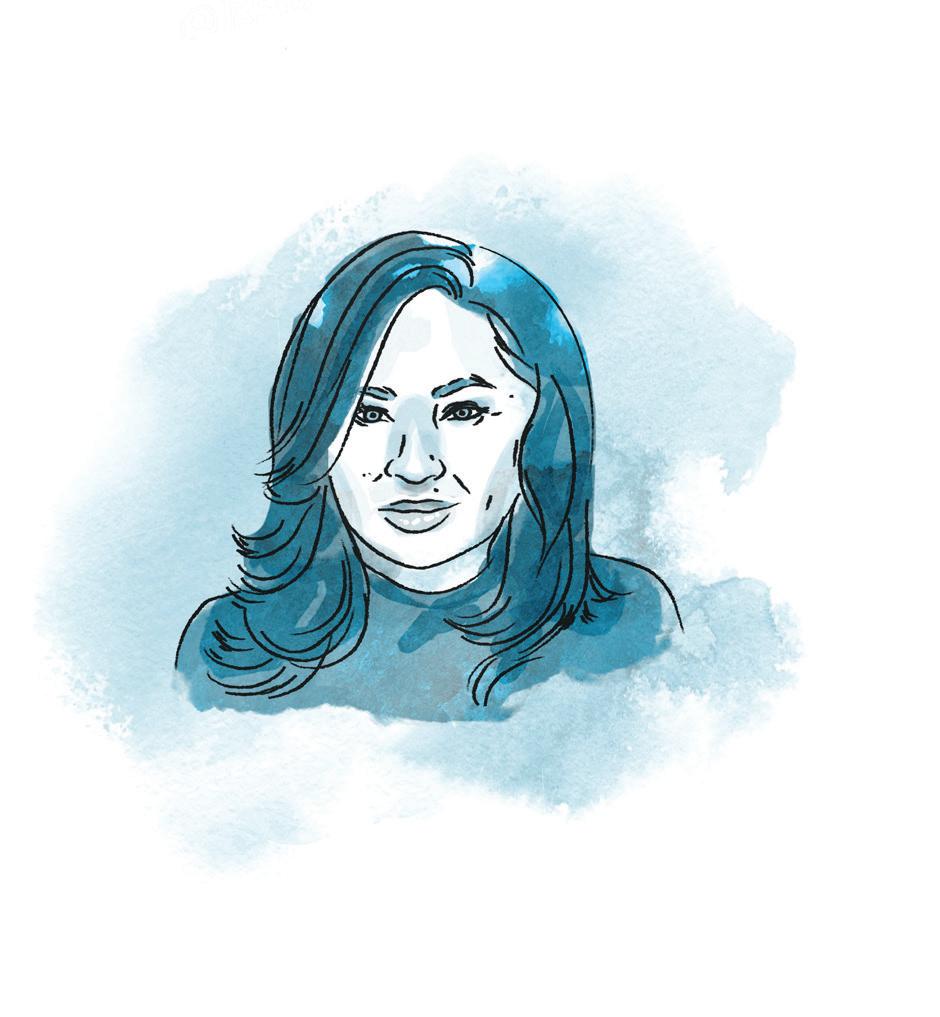
“After doubling my team last year, it became critical to find skilled staff and define the right approach to build a high-performing finance group. My strategies involve empowering team members and fostering a collaborative work environment. By providing autonomy within parameters, employees take ownership of their responsibilities when assigned tasks and projects based on their strengths and skills. This approach empowers people to excel and builds confidence.”



TCA Gala
Complimentary
TCA Tour of Homes
Sunday, Oct. 20th
Homes are in the Turtle Creek Area
1:00 pm to 4:00 pm
Complimentary
THANK YOU TO OUR SPONSORS FOR SUPPORTING THE
TITLE SPONSORS:
PREMIER SPONSOR: NETSCOUT SIGNATURE SPONSORS: 3TO1 FOUNDATION | AMDOCS | AMERICAN CANCER SOCIETY | ASCEND DALLAS | THE CENTER FOR AMERICAN AND INTERNATIONAL LAW | CHRIST’S HAVEN | THE CONCILIO | DALLAS CHILDREN’S ADVOCACY CENTER | DALLAS MAVERICKS | DALLAS PETS ALIVE! | DALLAS REGIONAL CHAMBER | DALLAS SPORTS COMMISSION | FAMILY GATEWAY | GOODWILL | GRANT THORNTON ADVISORS | GRIT PRODUCTIONS AND EXPOSITIONS | HIGGINBOTHAM | HOPE COTTAGE AND JUBILEE PARK | KLYDE WARREN PARK | MEDICAL CITY HEALTHCARE | NEW FRIENDS NEW LIFE | OPERATION KINDNESS | THE PEROT MUSEUM OF NATURE AND SCIENCE | SCHWAB CHARITABLE | SERVE DENTON | SHARING LIFE COMMUNITY OUTREACH | SOUTHWEST AIRLINES | THE STEWPOT | TEAMIZZY FOUNDATION | TEXAS CAPITAL BANK | TOLLESON WEALTH MANAGEMENT | TURTLE CREEK ASSOCIATION | UPLIFT EDUCATION | VISIT DALLAS | VISTA BANK
If you are interested in supporting next year’s Nonprofit & Corporate Citizenship Awards, or other events like this, please reach out to sales manager Rachel Gill at rachel@dmagazine.com to discuss further.

































WHAT I DO:
“I’m a managing director for the commercial real estate firm Newmark. My practice group negotiates office and industrial leases on behalf of companies and partners with those occupiers to better optimize their real estate footprint, workplace strategy, and site selection.”
STYLE ICON:
“Ralph Lauren hasn’t missed in 50 years.”
ON THE JOB:
“I live by this mantra: If you are going to win business, you better look like you have the business. Professional dress has changed profoundly over the past 10 years, particularly around the C-suite in tech. I know guys worth nine figures who wear white sneakers and jeans to a board meeting. Clichés have a knack for having some truth to them—dress to your audience.”
FASHION INSPIRATION:
“The Rake is an anchor. Think Isaia, Kiton, Brunello. I grew up on the East Coast, so I guess that’s an excuse to have attention to detail. Luca Faloni, Pini Parma, and Aurélien have taken off. Faherty is great for the weekends.”
STYLE DEFINED:
“I would describe my style as constantly sartorial. Oliver Stone’s Gordon Gekko will always be an icon. Monochromatic is always another easy go-to.”
FASHION ESSENTIAL:
“I never leave home without a timepiece. I always keep a lint roller on me.”
GO-TO LOOK:
“I prefer suits, although some say the tie died after the pandemic. Stefano Ricci would say otherwise.”
HOW I ACCESSORIZE:
“Less is more, but spend the money on nice shoes.”
FAVORITE STORES:
“My go-to spot is Hadleigh’s. However, anyone who pretends anything is wrong with a good thrift find shouldn’t be trusted.”
As a child, the president of Romano Enterprises and leader of Nick & Sam’s was one of the country’s top Pokémon video game players.
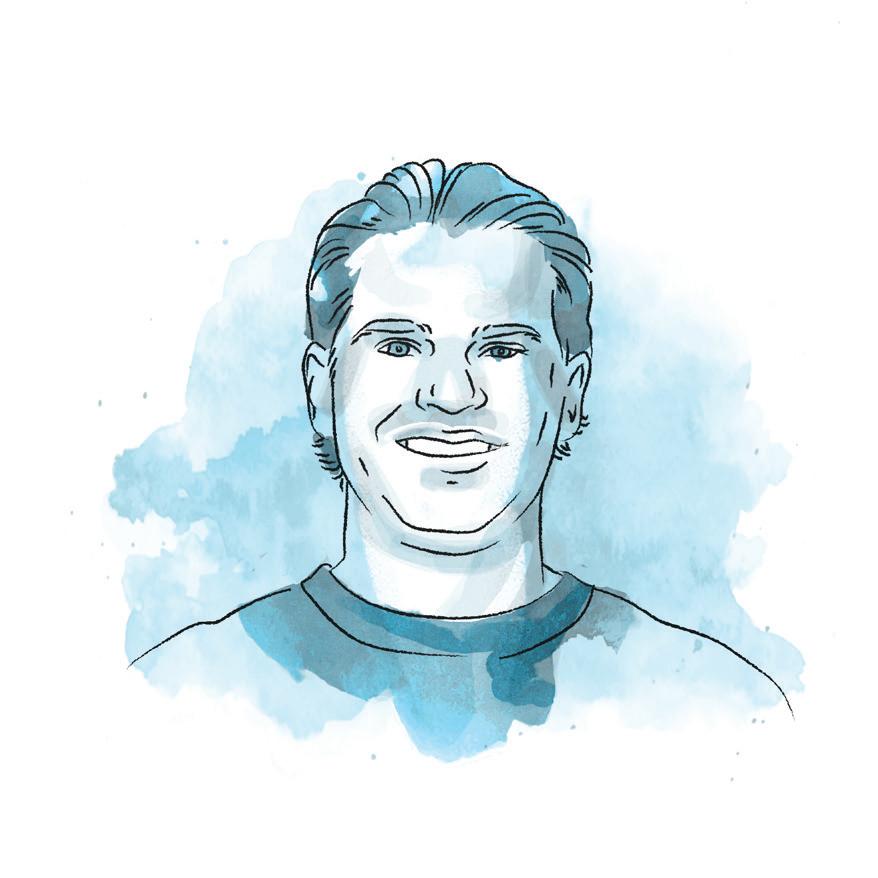
in 2005 , when sam romano was nine years old, he was diagnosed with ulcerative colitis, an autoimmune disease that attacks the digestive system. His battle with the disease was up and down, sometimes forcing Romano to spend weeks in the hospital. The sports-crazed kid was devastated that he couldn’t be on a field somewhere and had to find a way to scratch his competitive itch. While he was fighting to recover, Romano, who eventually became an All-American college lacrosse player at Syracuse University, turned to the Pokémon video game on the Nintendo Game Boy.

“I beat my friends all the time—they even stopped playing with me; they told me I needed to compete in tournaments,” Romano says. So, he gave it a shot. In 2006, Pokémon hosted a 10th Anniversary Journey Across America tour that saw video game tournaments pop up across the country. It culminated with a national championship in New York City.
Romano was too sick to go when the tour came to NorthPark Center in Dallas. However, the next closest city it stopped in was Oklahoma City. Romano recovered just in time, and his mom drove him north to compete. “Sure enough, I started winning,” he says with a laugh. “I ended up playing a 23-year-old from Oklahoma, and here I am, nine years old—everybody’s cheering for me—and I beat him. Winning that tournament got me an invite to New York City to compete in the national championships.”
The two-day event in Bryant Park was an all-expenses-paid journey for Romano. Hulk Hogan commentated on the matches. Romano was eliminated in the quarterfinals, but to him, the tournament was everything he needed. He soon recovered from his ailment and got back into sports. He no longer plays Pokémon but is still proud of his rare, first edition Pokémon card collection—25 cards that include those signed by Mitsuhiro Arita, an artist for Pokémon since its inception, and some that are valued as high as $1,000.
Today, Romano runs Romano Enterprises, a family office that invests in movie production, the restaurant industry, hemp, and more. “That season of life, although I was sick, taught me a lot about being competitive,” he says. “And training a Pokémon is a lot like business. You train your Pokémon behind the scenes, and nobody sees your work until it’s time for battle.” — Ben Swanger















































PepsiCo is proud to congratulate Jenny Allenbaugh on being named a 2024 Corporate Counsel Awards Finalist.



















Jenny works hand-in-hand with her business clients to identify solutions to both grow the business and protect some of the most iconic brands in the consumer packaged goods industry such as Lay’s, Doritos and Cheetos. Jenny’s intelligence, hard work and attention to detail have earned the respect of her business clients and colleagues.

































Well done, Jenny!




























Jenny Allenbaugh Legal Senior Director, Marketing & Regulatory Frito-Lay North America

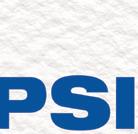











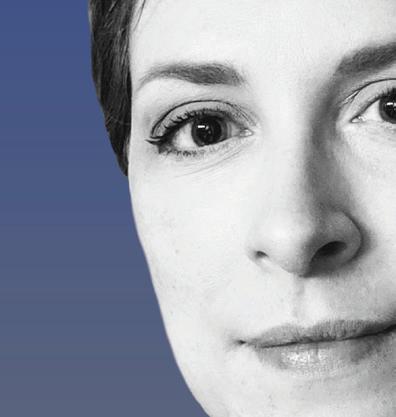





With gratitude to each of our Dallas Division Board Members for their commitment to advancing our mission of being a relentless force for a world of longer, healthier lives.


Mark Sanders Retired Chief Executive Officer Caliber Board Chair
Chris Clark Managing Partner Forvis Mazars
Jenny Cochran Community Volunteer
Jennifer Durbin
Senior Vice President, Chief Human Resources and Communications Officer Commercial Metals Company
Trent Handy Partner Ernst & Young
Howard Mudrick Executive Director Winstead PC
Stacy Nahas Audit Chief Growth Officer KPMG
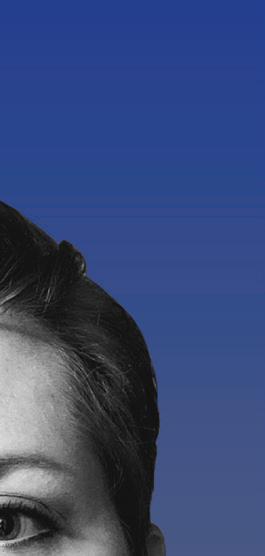


















Dr. Sandeep Das Professor of Internal Medicine UT Southwestern Board President
Joe Brayton Co-Founder
Yigal Elbaz
Senior Vice President, Network Chief Technology Officer AT&T
Doreen Griffith
Market Managing Principal Grant Thornton LLP
Leadership Succession Chair
Dr. Sunita Koshy-Nesbitt Chief Quality Officer Texas Health Resources
Allen Nye Chief Executive Officer and Director Oncor




Donna Robinson Chief Commercial Officer TeleVox Healthcare
Dr. Jeffrey Schussler Chief Medical Officer
BSW Heart & Vascular
Dr. Gordon Taylor Retired Executive Director Region 10



Pickler Universe & Entrepreneur
Dr. Mark Chassay
Texas Vice President
BCBS of Texas
Dr. Lanny Hall
Assistant Professor of Internal Medicine, Division of Cardiology UT Southwestern
Andrew Olowu Chief Technology Officer Axxess
Dr. Lori Rapp
Superintendent Lewisville ISD
Dr. Bharath Thankavel Vice President of Network Integration and Cardiovascular Services
Medical City Healthcare
Scott Thompson Partner
Haynes Boone
Eric Vroonland
DFW Managing Partner Deloitte Consulting
Steve Woodward
Retired, Chief Executive Officer
Kirkland’s


Ski Colorado four ways, with Billingsley exec and expert skier Marijke Lantz Flowers


A RIDE
The Silver Queen gondola at Aspen Mountain (Ajax) provides skiers with scenic views and access to 75 trails.




HIGH TIMES
Aspen
Ddespite being 350 miles from the nearest ski resort, Dallas is home to one of the most active ski clubs in the country. Formed in the 1950s, it has 600 members and hosts six trips a year, along with non-ski trips in the summer and monthly happy hours. I spent a week with the club earlier this year in Aspen—the one destination that has a perennial spot on the DSC’s annual schedule.
It’s easy to see why; with four resorts, Aspen offers something for everyone. Buttermilk is terrific for first-timers and other learners. Aspen Mountain, also known as Ajax, is on the other end of the spectrum; it’s the only resort in the country with zero beginner trails. Aspen Highlands is also known for its challenging terrain—especially the Highland Bowl. (To get there, you must hike to the summit of Highland Peak.) Most visitors flock to Snowmass. With 91 downhill trails, it’s larger than the other three mountains combined.
Of the four, Aspen Highlands was favored by my boyfriend, an expert skier. I liked Snowmass best. We were fortunate to have a couple of days with fresh powder, and the skiing was incredible. Pro tip: Don’t miss the chance to take a Poma lift to Cirque and ski at 12,510 feet. Just wow.
For accommodations, the DSC took over The Gant, a 140-unit condo resort that celebrated its 50th year last year. The condos are cozy and comfy, and the resort is within walking distance

of downtown shops and eateries. Our favorite restaurant in Aspen by far was West End Social, where the Bauhaus decor was just as delightful as the craft cocktails, scrumptious desserts, and flavorful entrees on the ever-changing menu.
We had kicked off our “ski Colorado four ways” mission a few weeks earlier with a visit to Steamboat Springs, an Old West town that’s surrounded by ranches and the Yampa Valley. Visibility issues and unseasonably cold weather took the fun out of our first day on the slopes, but day two brought gloriously blue skies, fresh snow, and extraordinary conditions. Steamboat is ideal for intermediates and has a very family-friendly atmosphere. It’s also renowned for having some of the best tree skiing in North America and is one of just a handful of Colorado resorts that offers night skiing.
While in Steamboat, have at least one meal at Yampa Valley Kitchen. It’s one of three local eateries from restaurateur Hannah Hopkins, who also runs Mambo and Bésame. The beef stroganoff I had for dinner was spectacular, as was the Waldorf salad starter. And don’t even get me started on the profiteroles (cream puffs with vanilla bean gelato drenched in chocolate sauce).
The third stop on our tour took us to Breckenridge. For the first two nights, we stayed at One Ski Hill Place, a slopeside resort at the base of Peak 8 that provides access to four chairlifts and the BreckConnect Gondola, which runs to and from downtown. The ski area is huge, with 2,900 skiable acres, 187 trails, and four terrain parks. Breck’s five peaks, numbered from 6 to 10, each have their own personalities. Take some time to study the trail maps in advance—or, better yet, sign up for one of the resort’s free mountain tours.
With perfect weather and snow, I was having a blast on our first day of skiing, but it was cut short by a high-speed wipeout that led to a concussion. The sole benefit was that the doctor’s “no skiing” orders gave me a chance to explore the charming mountain town the next day and take a snowcat tour at Breckenridge Nordic Center. (It sure was
continued on page 064
Marijke Lantz Flowers was 3 years old when she first learned how to ski. Growing up in Georgetown, a tiny mountain town about an hour west of Denver, she made frequent visits to all the major Colorado destinations. “I’ve skied every year of my life except for when I was pregnant,” she says. “It’s my happy place.” A blackdiamond skier, Flowers prefers runs that are “steep and straight.” About 22 years ago, she began looking for a vacation home in Colorado; she picked Steamboat Springs. She liked the area’s “champagne powder” snow and that it has a lower base elevation (about 6,700 feet) compared to other resorts. Because its northern Rockies location is farther away from Denver, it doesn’t get the day crowds that flock to other resorts that are closer in, she says. A self-described “foodie,” Flowers says she and her husband love Café Diva at the base of the mountain. (“It’s fine dining, but you don’t have to dress up,” she says.) They also love the fresh pastas and other Italian fare at Mambo, E3 Chophouse for steaks, and Yampa River Icehouse for Texas-style barbecue. Flowers offers a pro tip for visitors. “The locals will ski hard then visit the nice restaurants for the really great happy hour prices,” she says.

fascinating.) Meanwhile, my boyfriend worked on his bump skiing at nearby Keystone, known for its moguls, expansive terrain park, and five bowls. Last season, Keystone opened a new lift that provides access to more than 550 acres in Bergman Bowl and the more advanced Erickson Bowl.
For the last half of our Breckenridge adventure, we stayed downtown at The Carlin, a home on historic Main Street that has four lodging suites above a fine dining restaurant and underground tavern. Both the service and the food were exceptional at The Carlin, which specializes in elevated coastal cuisine and has an expansive raw bar. The next evening, we walked across the street to Rootstalk, whose owner, Matt Vawter, won a 2024 James Beard award. No surprise. The Sesame Cake alone (toasted rice and buckwheat crumble, caramel, ginger apples, and black sesame ice cream) gives a hint of the chef’s creativity.
Our final ski trip of the year was to Vail, a place that has been an annual destination for my boyfriend for decades. Having an experienced personal guide on hand was a big plus at the massive resort, which has 5,300 acres of skiable terrain, including the seven Legendary Back Bowls. Blue Sky Basin, the backmost bowl, is unforgettable; its size alone will take your breath away.
Along with some of the best skiing you’ll ever experience, there are two main centers at the base—Vail Village and Lionshead—where you will find a plethora of shops and restaurants. Stop in at 10th Mountain Spirits and pick up a bottle of Aspenglow, a sage-infused peach-vanilla cordial.
Like Breckenridge, Vail is one of the ski areas closer to Denver—about a 90-minute drive or shuttle ride away—so the lift wait times can sometimes get a little long. Try to avoid visiting on holidays and the weekends and get to the higher and further reaches early on.
On our journey back to Texas, we spent a final night in Denver at Halcyon, part of Dallas-based Makeready’s portfolio. Located in the upscale Cherry Creek neighborhood, it features A-plus touches (such as Jonathan Adler bath products and Lavazza coffee makers) and a gear room that’s stocked with everything from board games to Piaggio scooters. Before heading to the airport the next morning, we had breakfast at Local Jones. The griddled banana bread and crispy bacon gave us just the fortification we needed to get out and on our way home.


Along with tubing, night skiing, and ice skating, Keystone has the world’s largest mountaintop snow fort.

RETAIL ROW
Vail Village is renowned for its world-class restaurants, shopping, and heated sidewalks.


Along with an exceptional restaurant and underground tavern, The Carlin in downtown Breck offers four cozy guest rooms.


DENVER DIGS
Halcyon, part of the Dallas-based Makeready chain, is an ideal stop for those heading to and from Colorado ski resorts.




Senior Vice President, Wealth Management UBS

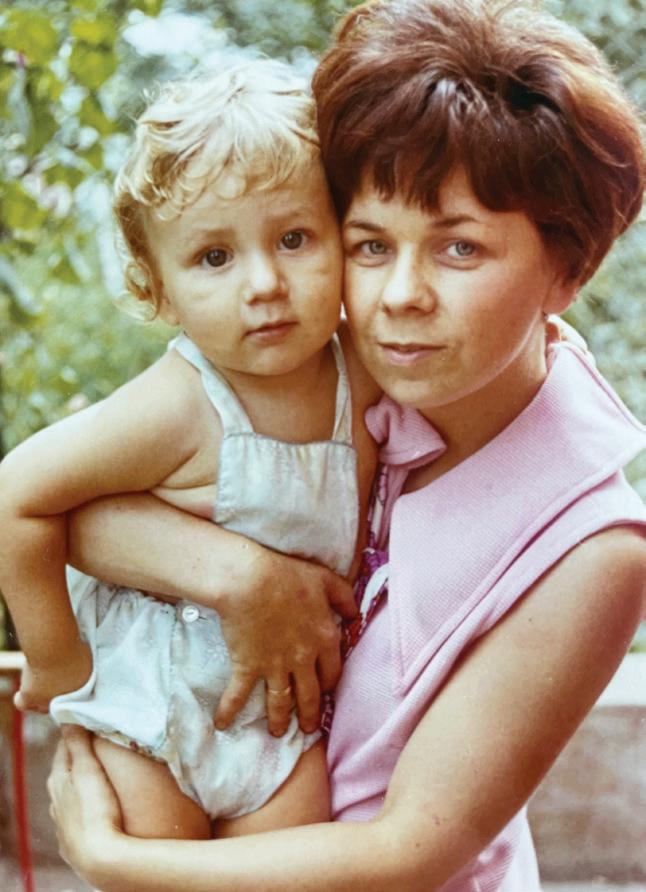
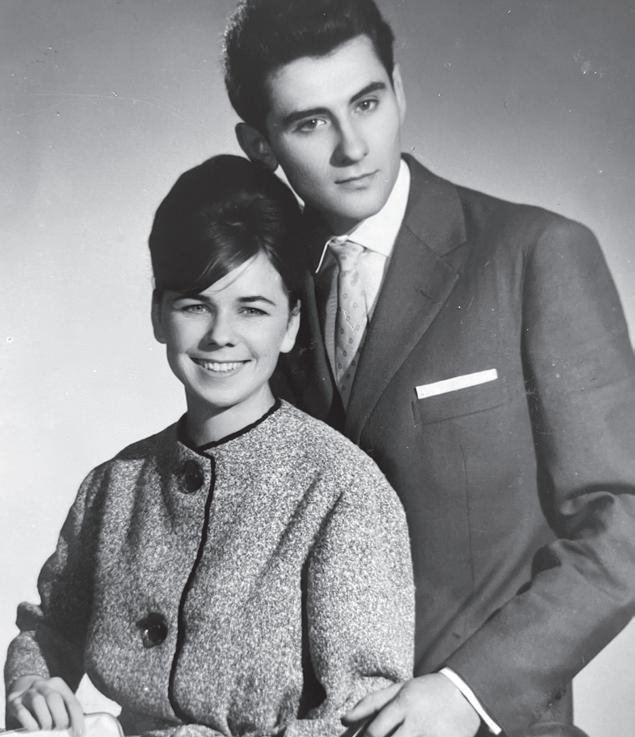
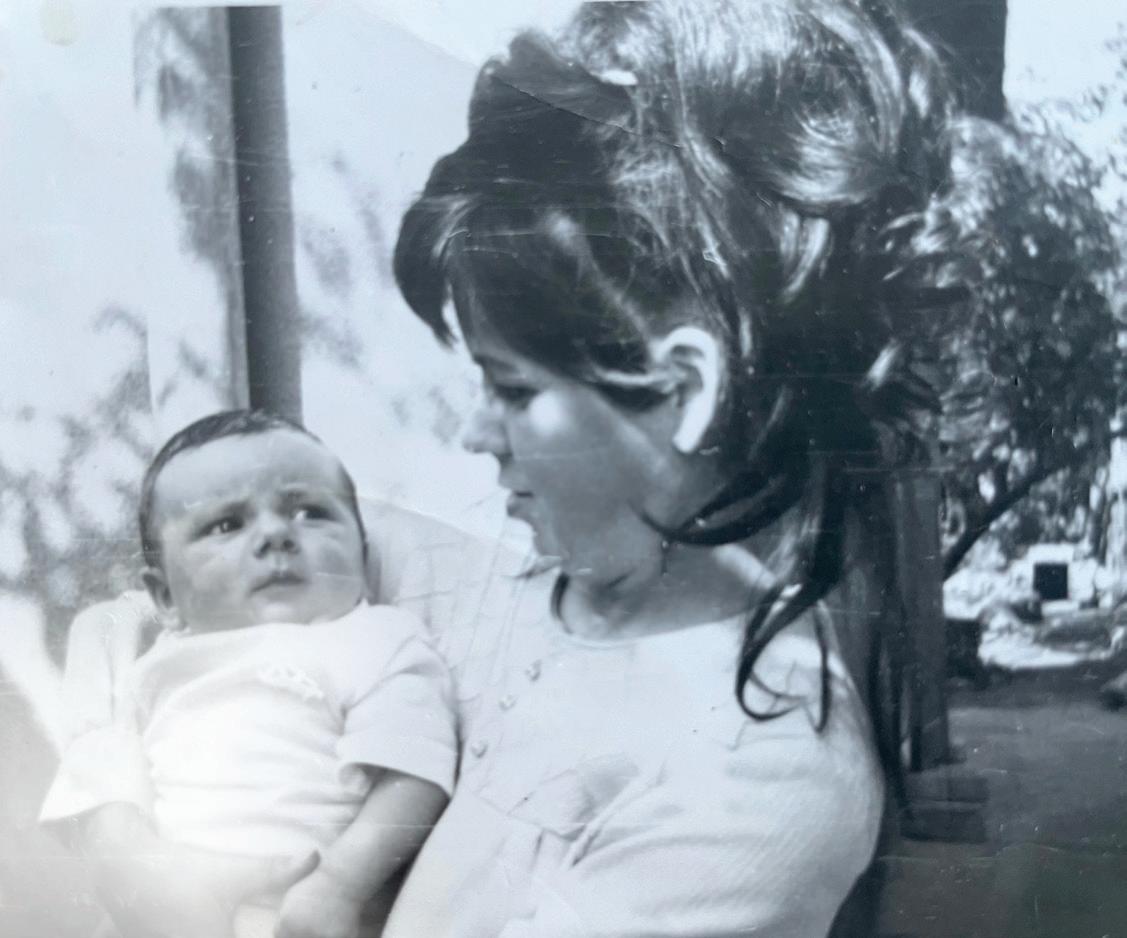
LAYTEN PRAYTOR
as he boarded his flight from Hungary to Texas in 1984, 15-yearold Viktor Szucs thought he was on his way to visit his aunt and uncle, Frances and Laszlo, the latter of whom had defected to the U.S. 20 years before. What he didn’t know was that his uncle and mother, Margit, had secretly formed a plan to have him permanently reside in America, away from Budapest, then part of the Soviet Bloc. His father, Gyula, had tried to move the family in the early 1970s but failed due to his membership in the Communist Party. Gyula was left stranded in Austria, effectively divorced due to political affiliations, and without a true relationship with his son before dying in the 1990s. Here, Szucs, senior vice president of wealth management for UBS in Dallas, recounts the events that led to his move. “My mother and uncle colluded. They decided to ship me out here
on a visitor’s visa. Once I got here, they got me on the phone, and my mom, in between a lot of tears, told me that my fate was going to be here with my uncle. After my father left, things became difficult. It’s hard to grow up in a communist country, but my mother always made things as normal as possible, and we have a great relationship. My journey has been helpful in serving clients today. We do values-based financial planning. Others start with ‘who, what, when, or how,’ while we always start with ‘why.’ Why did I come to this country? To create an opportunity for myself, to help make life easier for others—to help other people be free.”
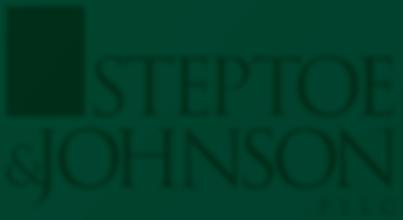






























































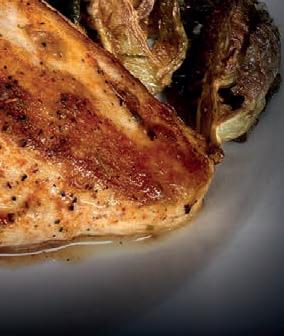



DALLAS REMAINS A TOP CHOICE FOR WOMEN WHO WANT TO WORK IN THE COMMERCIAL REAL ESTATE SPACE, as North Texas continues to grow and prosper. Overall, the commercial real estate sector here presents a dynamic and supportive environment for women, with ample opportunities for leadership, innovation, and professional growth.
“As companies continue to grow as well as move their headquarters here, the business community remains diverse, creating vast commercial real estate opportunities,” says Sara Fredericks, director at Newmark.
“From small boutique firms to the largest ones, women in commercial real estate have options on where they want to practice regardless of where they are in their careers.
The women in this profession from the ‘80s and ‘90s have paved the way for many
others, opening doors and enabling more women to thrive in this field.”
Women in North Texas have a wealth of opportunities in the commercial real estate sector, fueled by the industry’s recognition of the benefits of diversity and inclusion. Their increasing presence in the industry is fostering more innovative and equitable workplace cultures and can mean additional profits for many companies, says Sandra Taylor, president of CREW Dallas.
“Companies with the most equal workplace cultures experience six times higher innovation,” she says. “Women have the opportunity to ascend to leadership and decision making positions. Companies are increasingly recognizing that by having women on their teams, racial and ethnic diversity in these roles can lead to significant financial benefits, as evidenced by the potential for up to 35% higher returns and six percentage points added to a company’s net margin with 30% female board representation.”
The women leaders in commercial real estate on the following pages are respected trailblazers and experts in their field. They are surpassing goals and breaking records every day as North Texas continues to grow. They have shaped Dallas-Fort Worth commercial real estate and remain at the forefront of what’s new and next in the industry throughout the region.
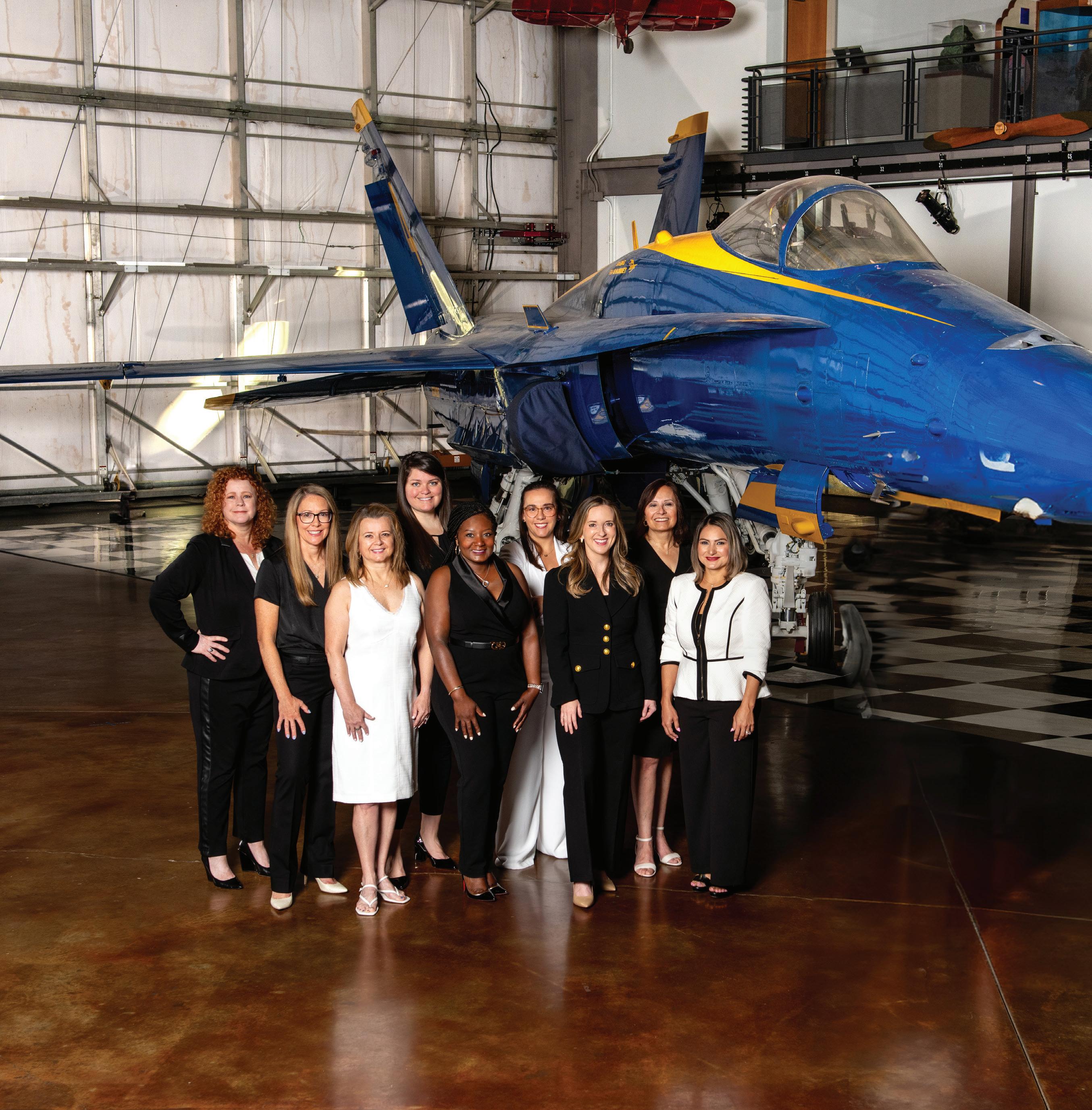
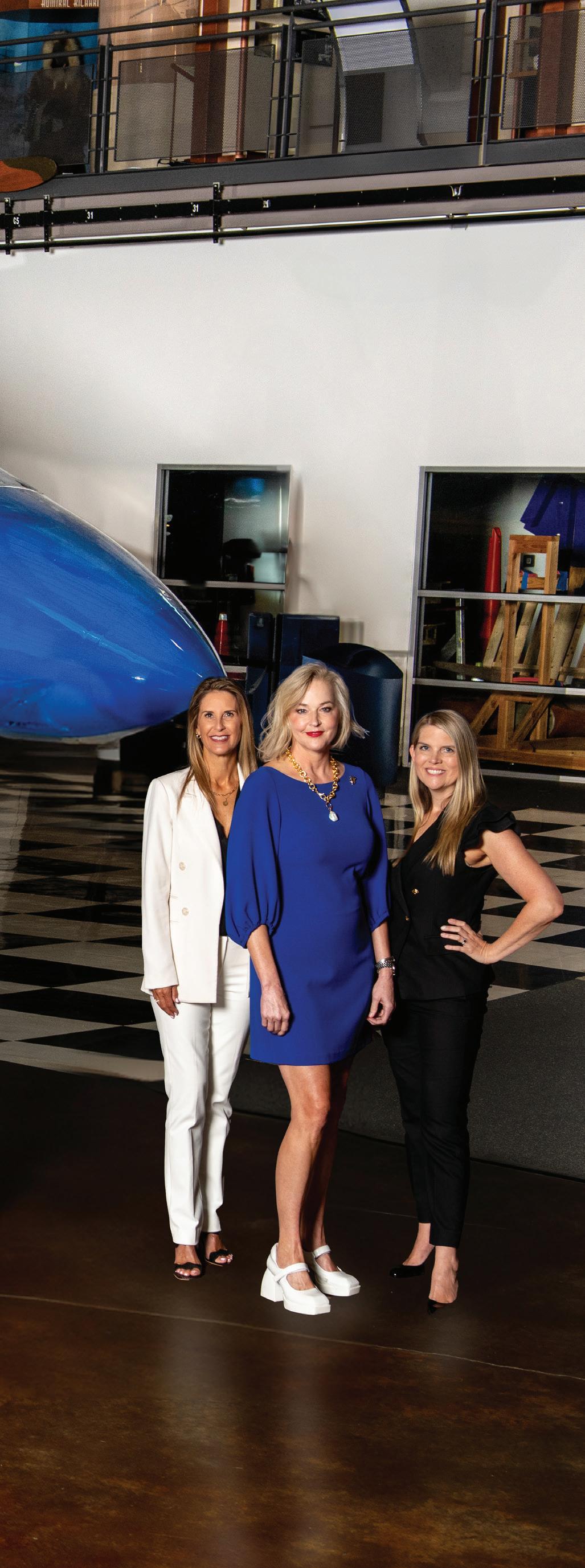
crew dallas is a premier organization focused on advancing women in the commercial real estate industry, a field traditionally dominated by men. With a membership base of more than 400 professionals spanning various levels, specialties, and demographics, CREW Dallas stands out for its exclusive events and impactful programs. The organization offers a wealth of leadership opportunities, with members encouraged to take on roles within various committees and the board of directors. These leadership positions allow women to sharpen their skills, expand their influence, and drive meaningful change within the industry.
CREW Dallas members benefit from access to top-tier leadership programs and industry seminars designed to keep them at the forefront of market trends. The organization also facilitates networking events where professionals can forge valuable connections and share industry insights. In addition, CREW Dallas provides mentorship programs that offer personalized guidance, helping members navigate their careers more effectively.
214.890.6490
crew-dallas.org
The impact of these leadership opportunities on business is significant. Members who engage actively within CREW Dallas often achieve notable career milestones, such as launching new business ventures or securing influential roles within the industry. By fostering a supportive and collaborative environment, CREW Dallas not only empowers individual members but also brings diversity and strengthens the overall commercial real estate landscape in the Dallas-Fort Worth area. Through its commitment to developing female leaders, CREW Dallas is creating a more inclusive and dynamic industry, ultimately expanding commercial real estate opportunities for women in North Texas.
newmark is a world leader in commercial real estate, seamlessly powering every phase of the property life cycle. Combining the platform’s global reach with intelligence in both established and emerging property markets, Newmark offers strategic advisory and tailored solutions to global corporations, investors and occupiers.
As the fastest-growing firm in the industry over the past decade, Newmark’s ability to cultivate and nurture top talent is instrumental to driving its ongoing success. Across all segments of the business, Newmark’s bench of exceptional women are pushing boundaries and redefining excellence in commercial real estate.
“Great talent at Newmark sets the standard in the industry, bringing subject matter expertise across the full real estate life cycle and a strong focus on driving superior client solutions,” said Elizabeth Hart, Newmark’s president of leasing for North America.
By embracing a dynamic blend of perspectives and expertise, the women highlighted
here exemplify Newmark’s synergized approach and culture. Connecting emerging talent with seasoned professionals and leveraging a cross-functional platform, they play a pivotal role in positioning Newmark’s Dallas office, developing innovative strategies and spearheading high-profile client results. Their commitment to collaboration and forward-thinking will continue to inspire and impact the industry across leasing, property management, capital markets and beyond.
Are you ready to join these experts in blazing a new trail that shapes the future? Explore career opportunities with Newmark to become part of the team that makes a difference.

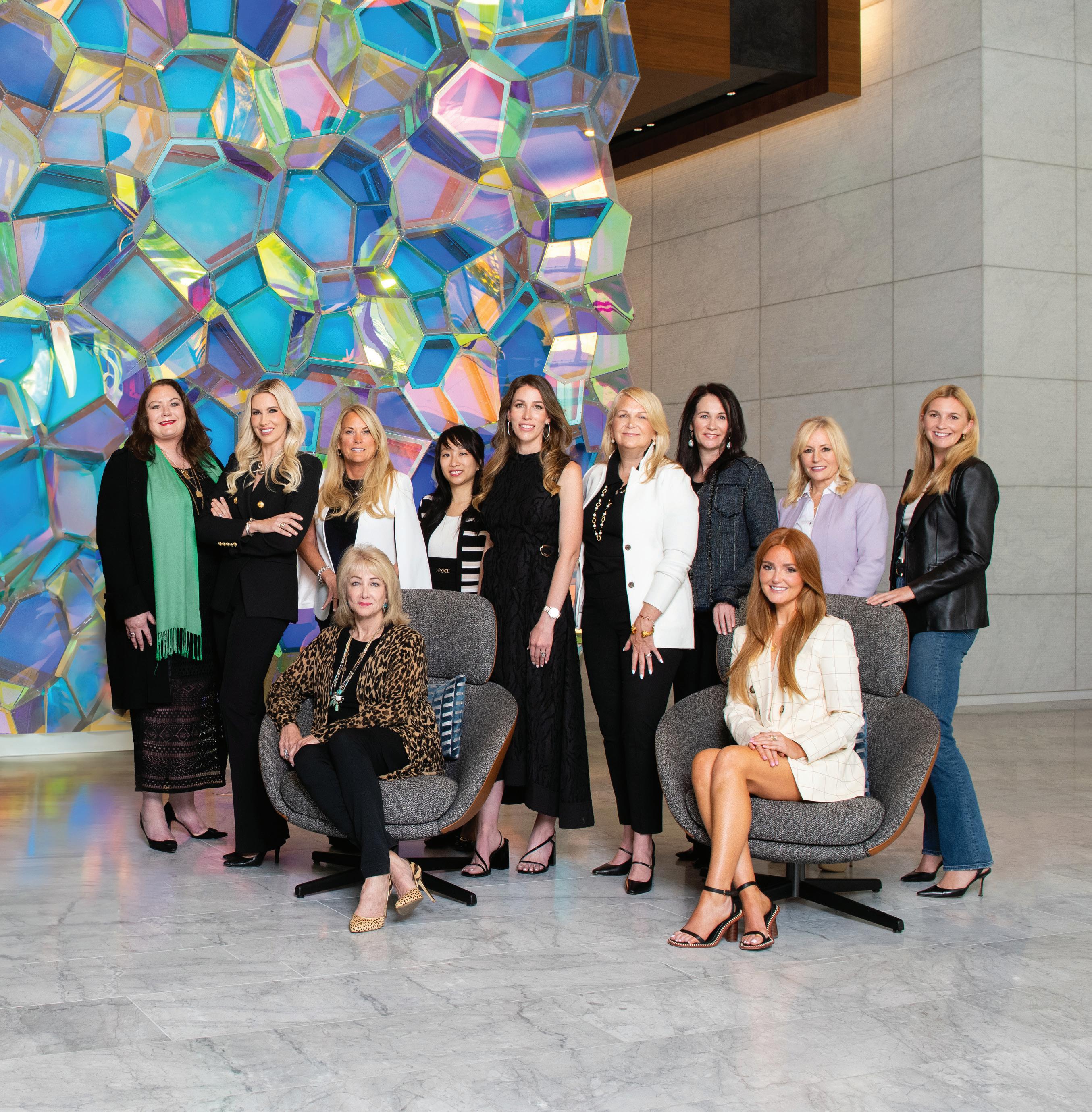
as one of the largest commercial real estate advisors by volume, it’s no surprise that Eastdil Secured continues to expand its presence in the Sunbelt. With more than $41 billion in transactions since 2021 in Texas alone, the firm combines commercial real estate and capital markets expertise to deliver customized solutions and advisory services to clients on some of the most complex transactions.
Eastdil Secured’s unique structure incentivizes its advisors, located in more than 20 offices around the globe, to collaborate on every deal. Does this structure work? The proof lies in their longstanding relationships. As managing director Elizabeth Malone aptly put it, “We prioritize our relationships with clients over any one deal. Our entire team works together to advance our clients’ goals.”
Eastdil Secured’s Dallas office, located in thriving Knox Street’s Weir’s Plaza, has grown from eight employees in 2019 to 40, 50% of whom are women.


Elizabeth
Sara
NAYLOR COMMERCIAL
Cheryl Nifong UNIVERSITY OF TEXAS AT ARLINGTON
Annette Nwabeke COMMIT PARTNERSHIP
Asia Rodgers POETIC
Summer Rose COMMUNITIES IN SCHOOLS OF THE DALLAS REGION
Jessica Rule SHK - THE ADVERTISING FIRM
Jessica Salcido MATCH GROUP
Natasha Santiago D MAGAZINE
Ann Sheu MPOWERED FAMILIES
Ahava Silkey-Jones DALLAS COLLEGE

Lauren Slade RESOURCE CENTER OF DALLAS
Stephanie Smith CHILDREN’S HEALTH
Katie Sperry DALLAS CHILDREN’S ADVOCACY CENTER
Morganne Stewart SMU - SPEARS INSTITUTE FOR ENTREPRENEURIAL LEADERSHIP
Anna Strother AT&T
Larissa Tavelli MCCARTHY BUILDING COMPANIES, INC.
Candace Thompson COMMUNITIES FOUNDATION OF TEXAS
Belysia Walker THERMO FISHER SCIENTIFIC
Danni White DW CREATIVE CONSULTING AGENCY
Rhonda Williams GIRL SCOUTS OF NORTHEAST TEXAS
Missy Wilson SALESMANSHIP CLUB OF DALLAS
Sherri Wood Cooper UT SOUTHWESTERN MEDICAL CENTER

NStory by WILL MADDOX
amed after his oil mag nate father, Clint Murchison Jr. experienced early tragedy when he lost his mother as a toddler and his 10-year-old brother Burk when he was 12. After attending boarding school in New Jersey and joining the Marine Corps after Pearl Harbor, Murchison graduated from Duke University with an engineering degree and MIT with a master’s in mathematics. After his father died, he and his brother John took the wealth Clint Sr. had created and began
operating as Murchison Bros. out of an office on the 23rd floor of the First National Bank building in Dallas. The family businesses had diversified into homebuilding, real estate, publishing, and hospitality. At one point, Fortune estimated Murchison’s wealth to be $350 million. “Money is like manure,” he once said. “If you spread it around, it does a lot of good, but if you pile it up in one place, it stinks like hell.”
Murchison’s role in founding the NFL’s Dallas Cowboys in 1960 would be his lasting legacy. His first hires were general manager Tex Schramm and head coach Tom Landry, who would go on to win two Super Bowls, play in five, and appear in 10 NFC championship games in 13 years on the way to becoming “America’s Team.”
In addition to on-the-field success, Murchison’s role in the planning, design, financing, and building of Texas Stadium in Irving redefined the modern football arena. With a suburban location, commercial-scale luxury suites, and an open-air roof that fans said allowed God to watch his favorite team, the stadium set the standard for future venues.
In 1984, under the financial strain caused by dropping oil prices, Murchison sold the franchise to Dallas businessman Bum Bright for $83 million and declared bankruptcy a year later. Five years later, Bright sold the Cowboys to Jerry Jones, who has owned the team since 1989.
POSTMASTER SEND ADDRESS CHANGES TO D, 750 NORTH ST. PAUL STREET, SUITE 2100, DALLAS, TX 75201. D CEO (ISSN2688-4852), IS PUBLISHED MONTHLY WITH THE EXCEPTION OF COMBINED ISSUES IN JANUARY/ FEBRUARY AND JUNE/JULY BY D MAGAZINE PARTNERS, 750 NORTH ST. PAUL STREET, SUITE 2100, DALLAS, TX 75201. APPLICATION TO MAIL AT PERIODICALS POSTAGE IS PENDING AT DALLAS, TX.










